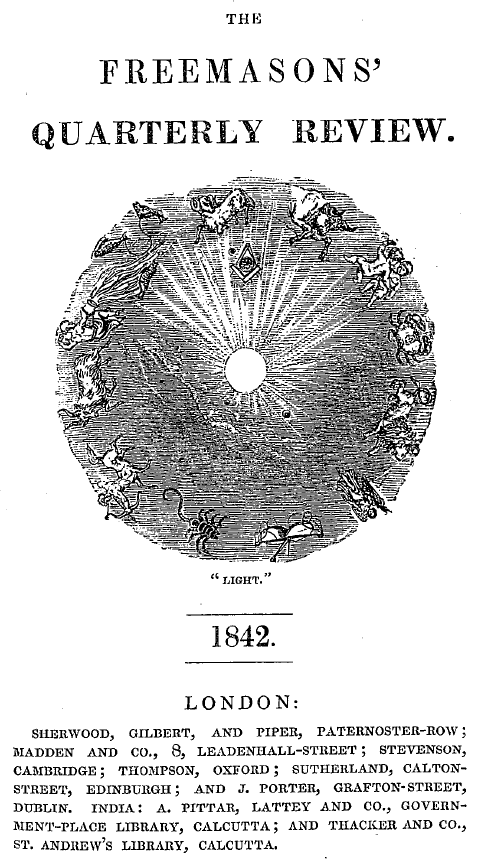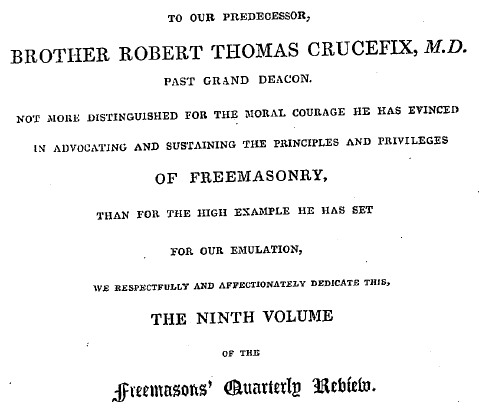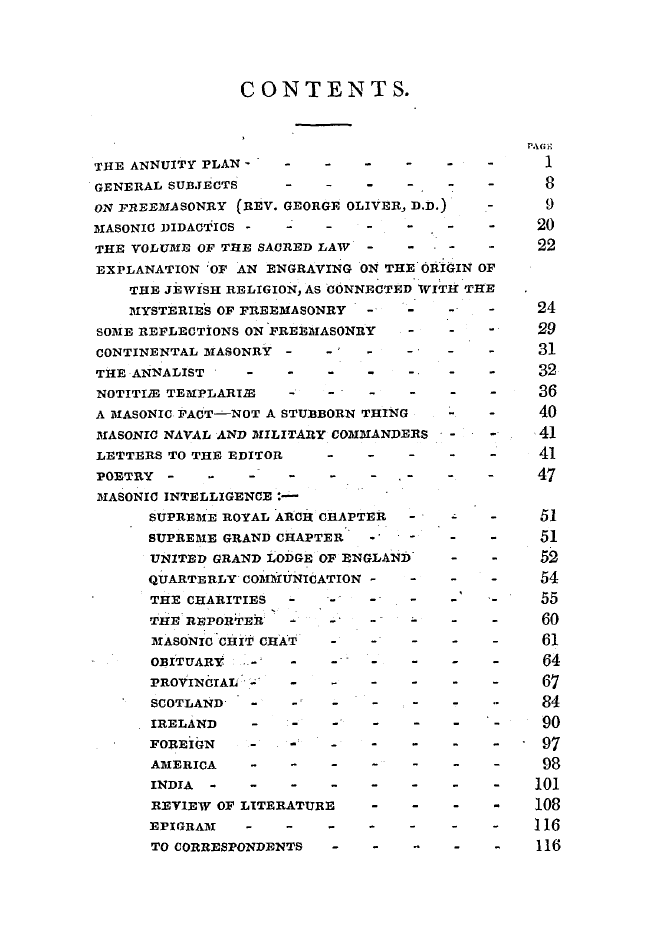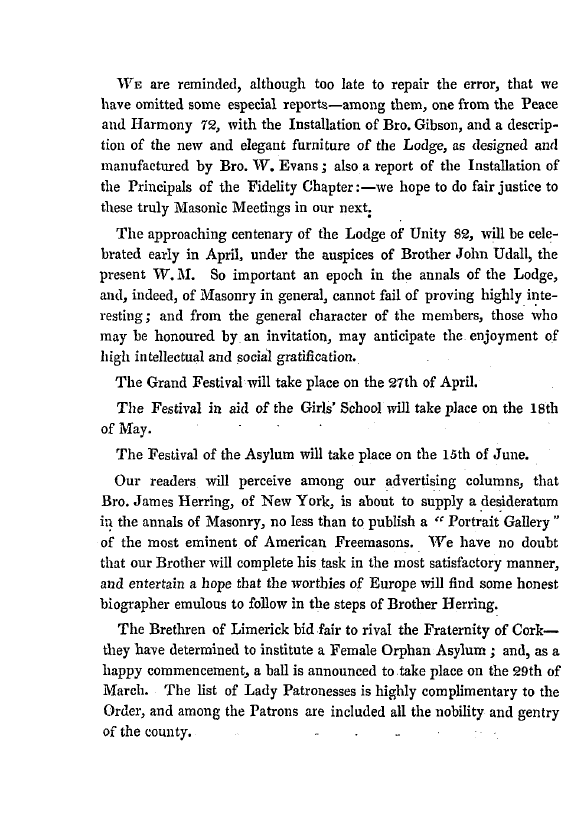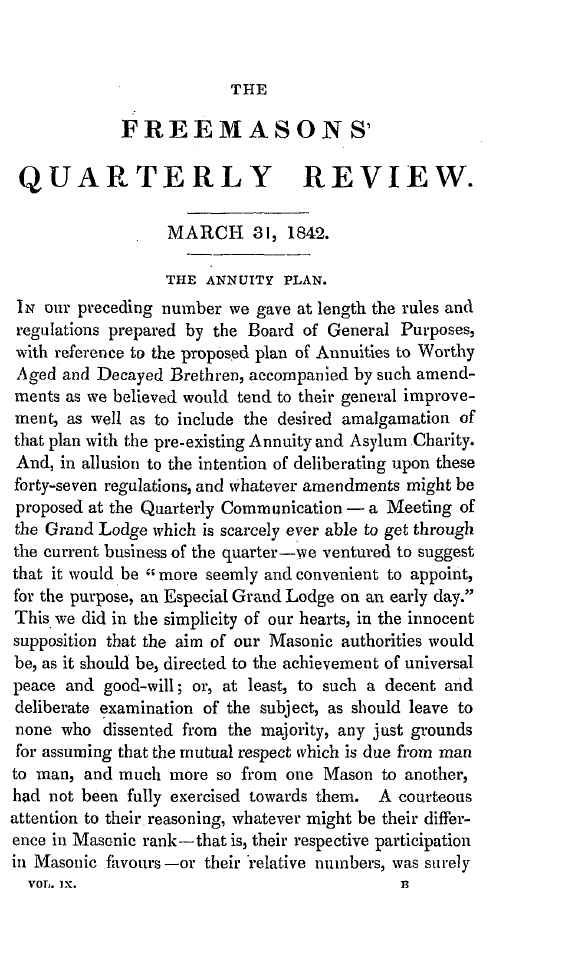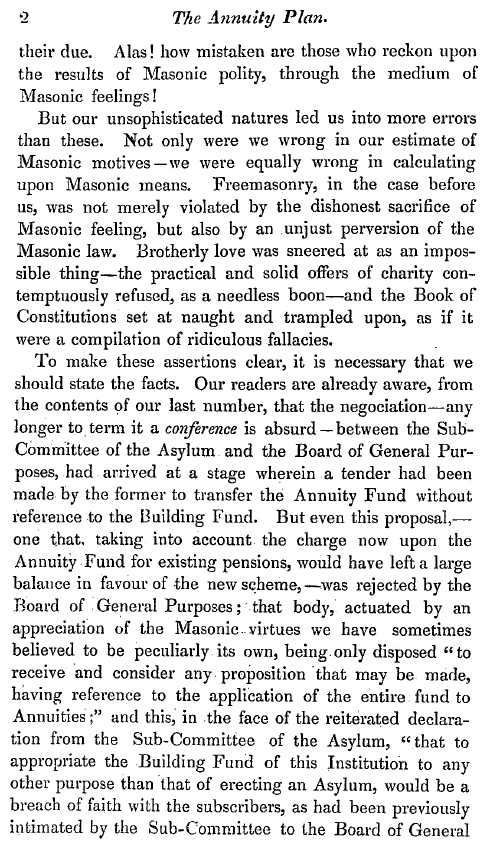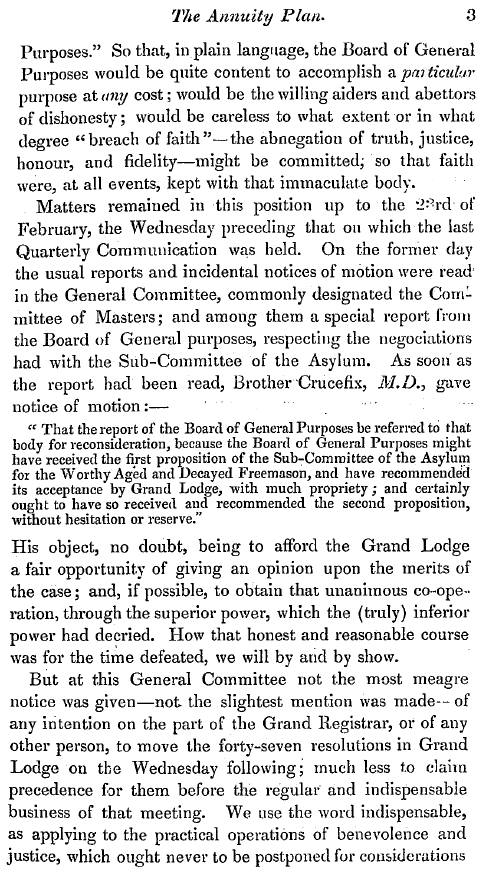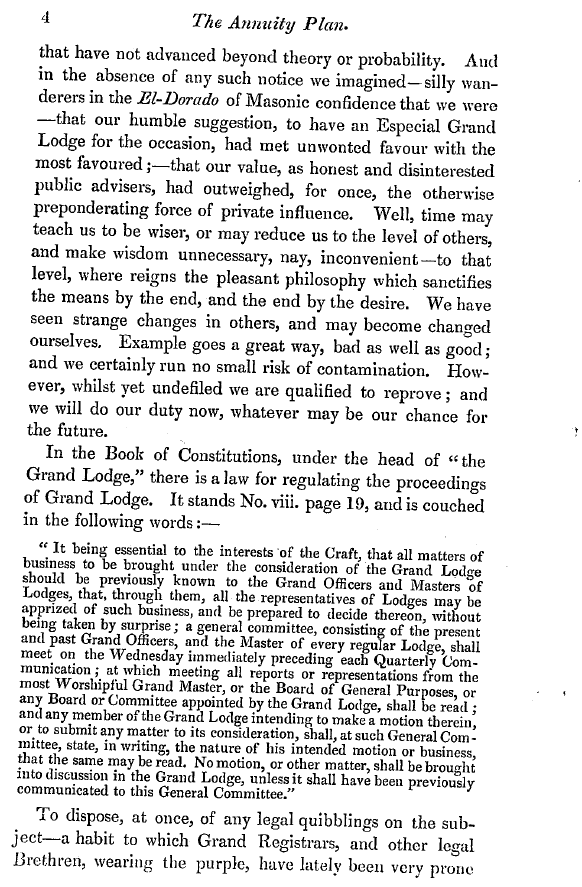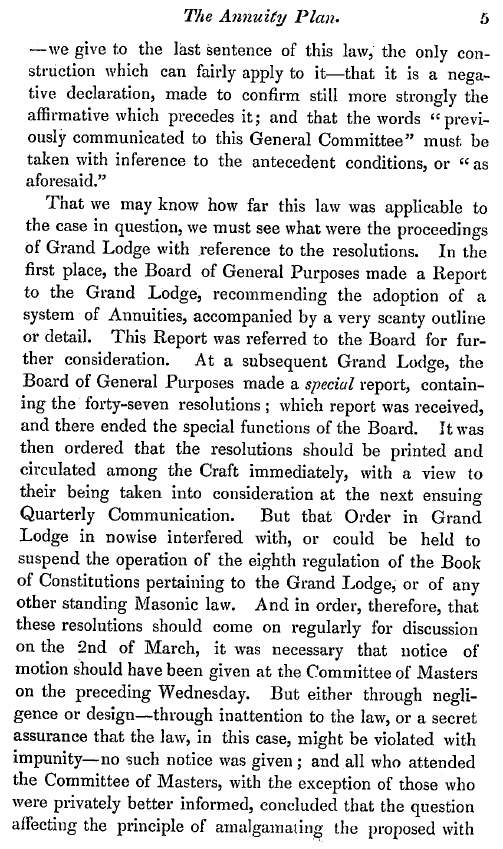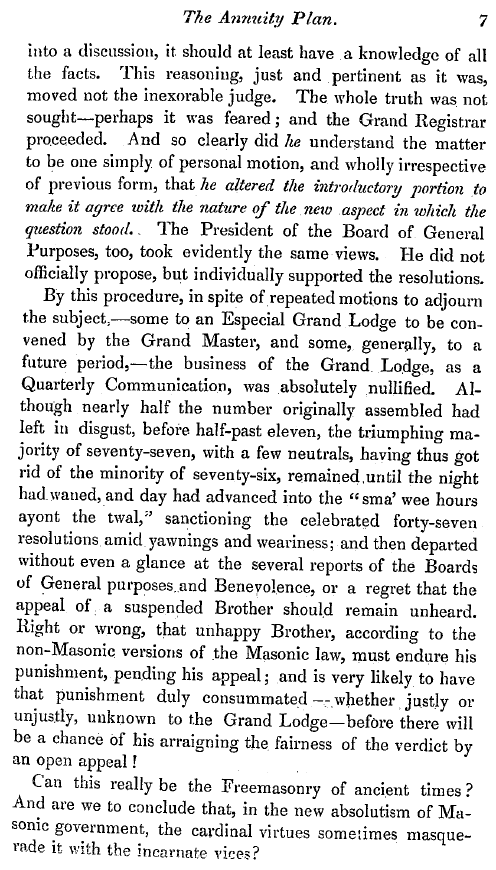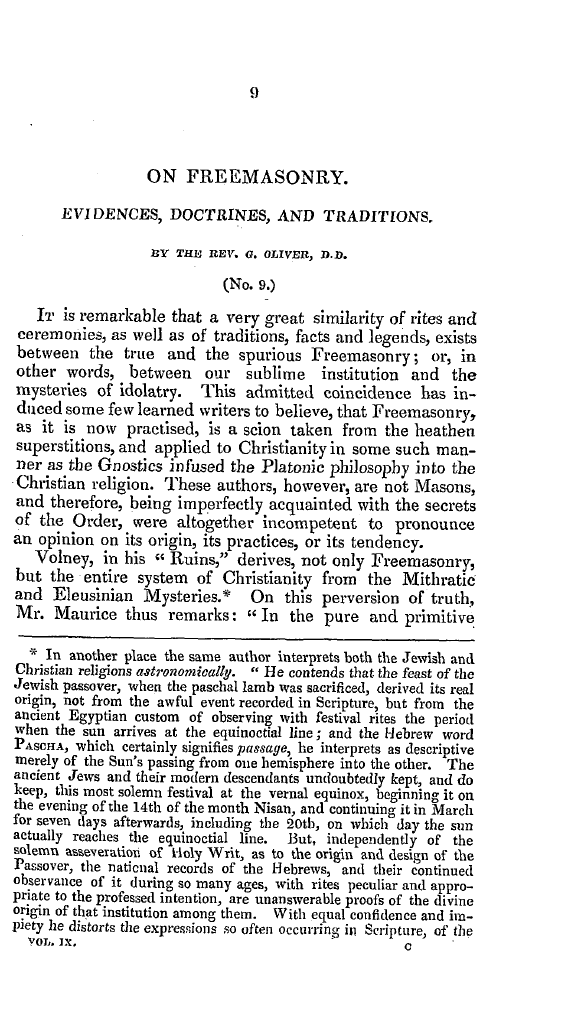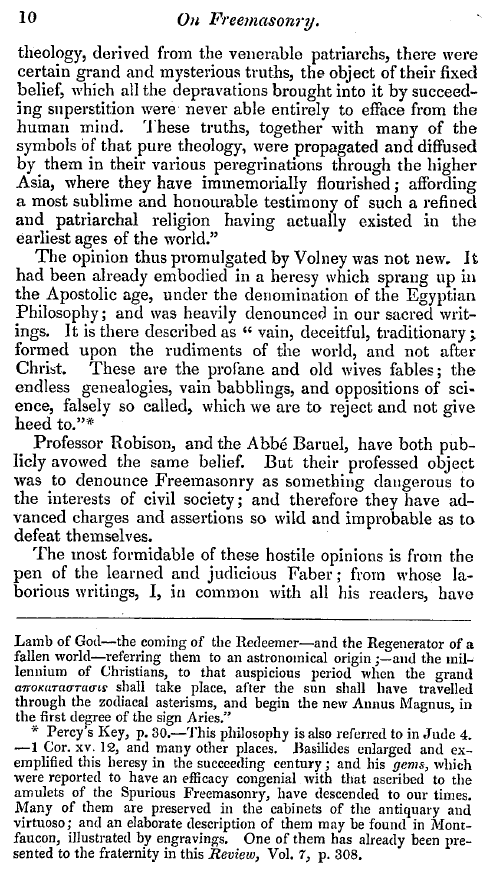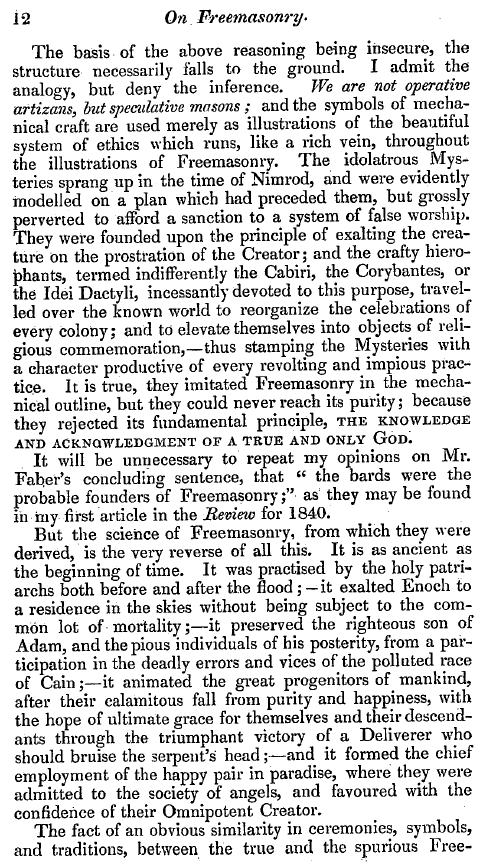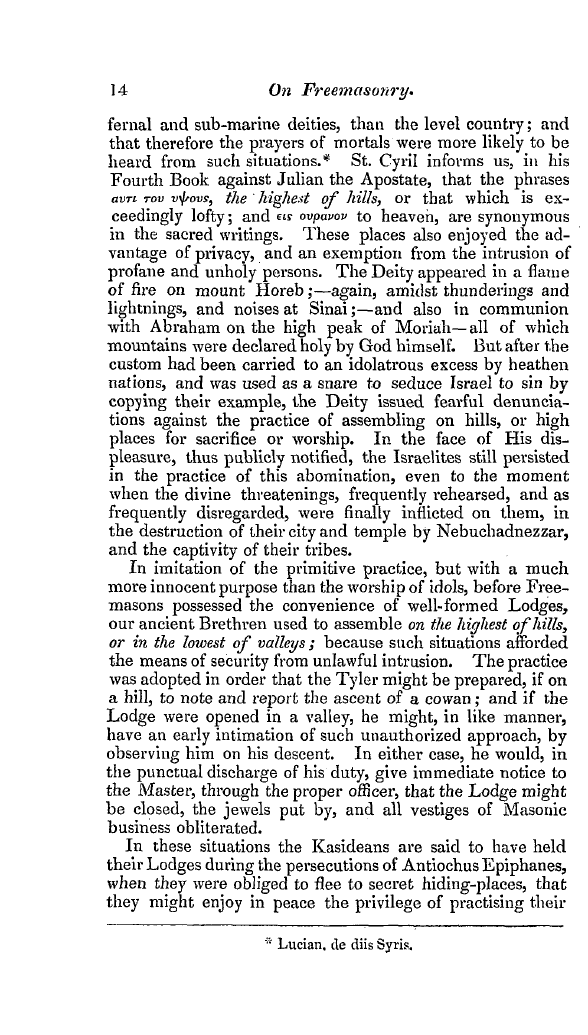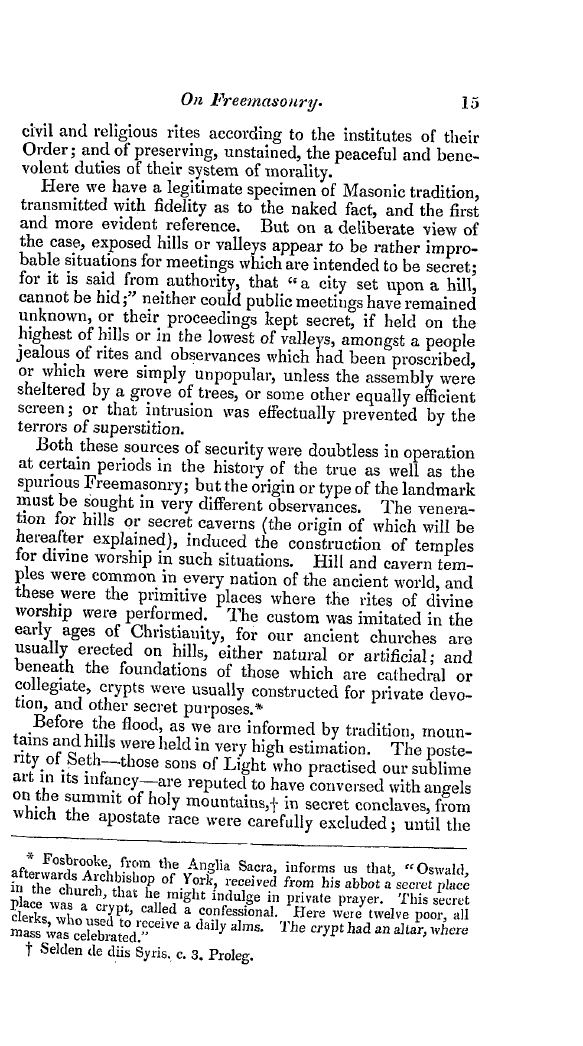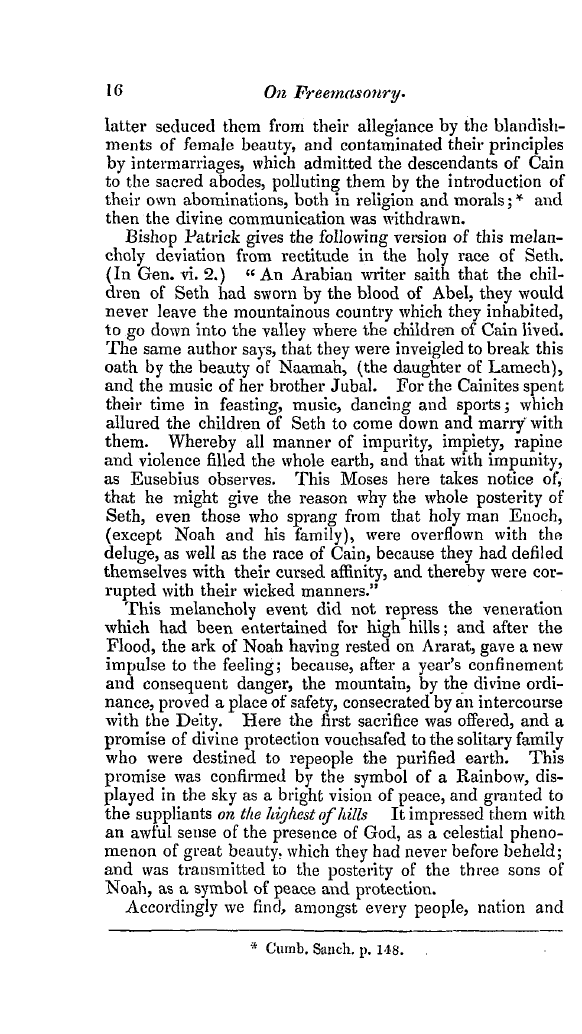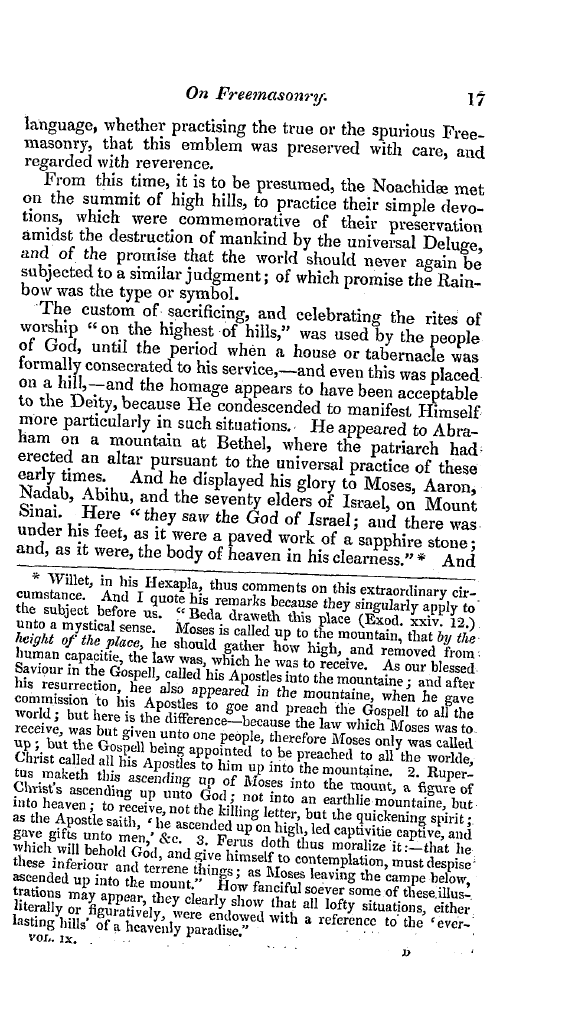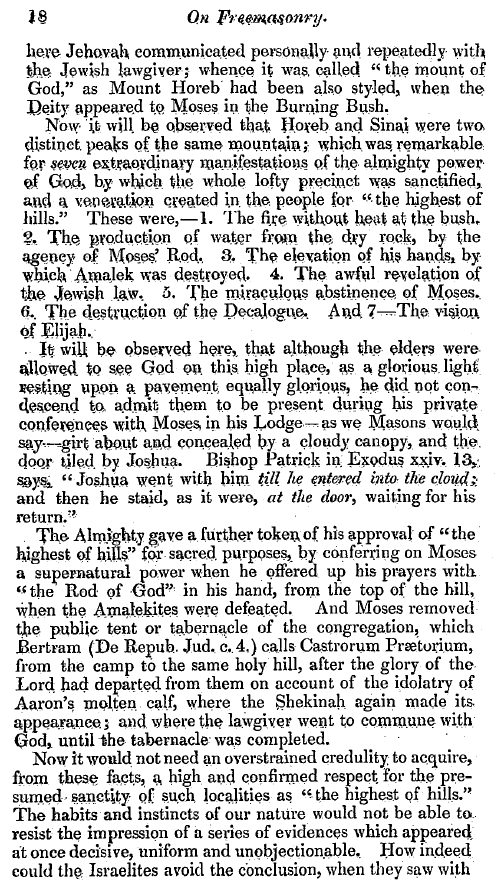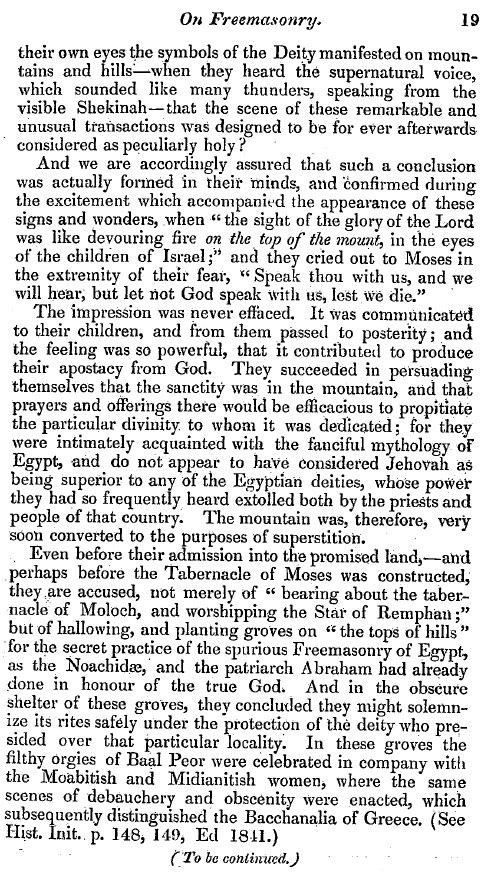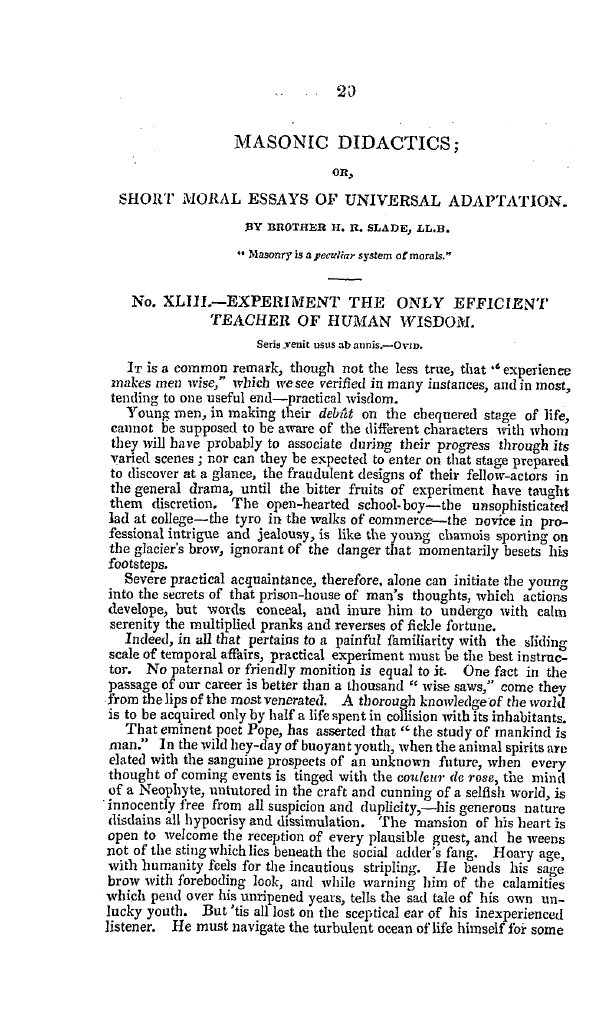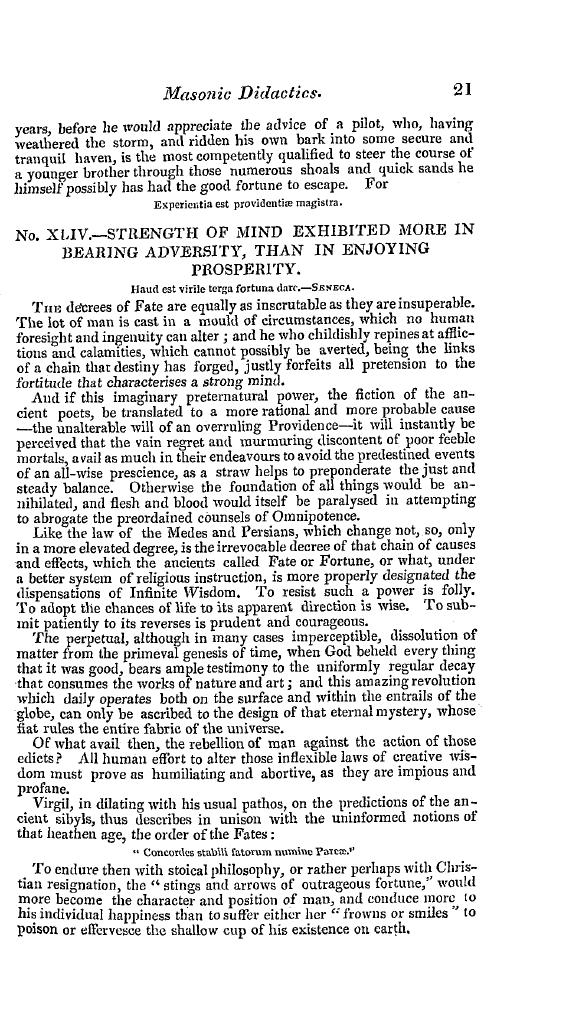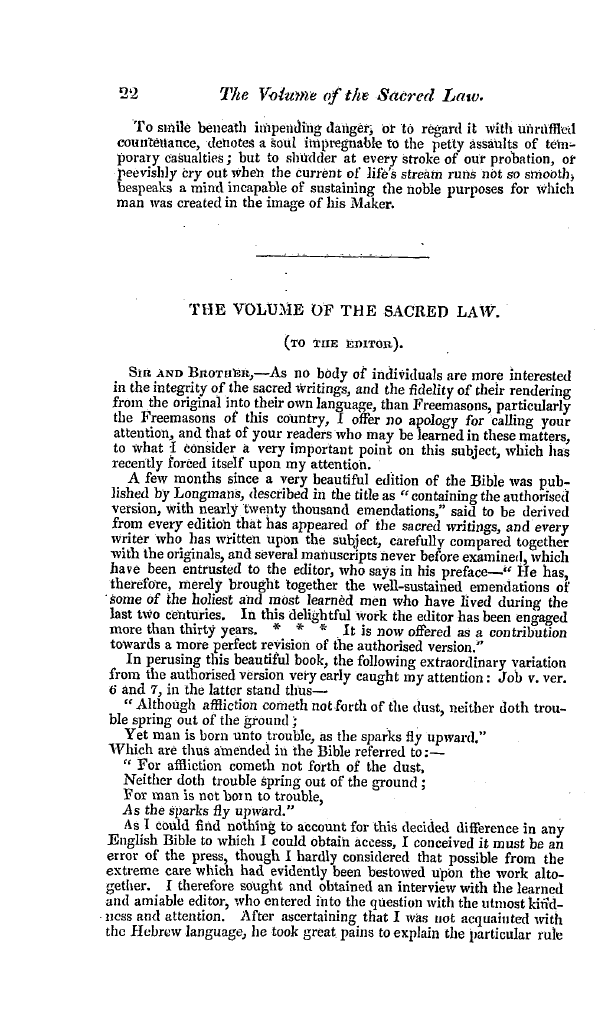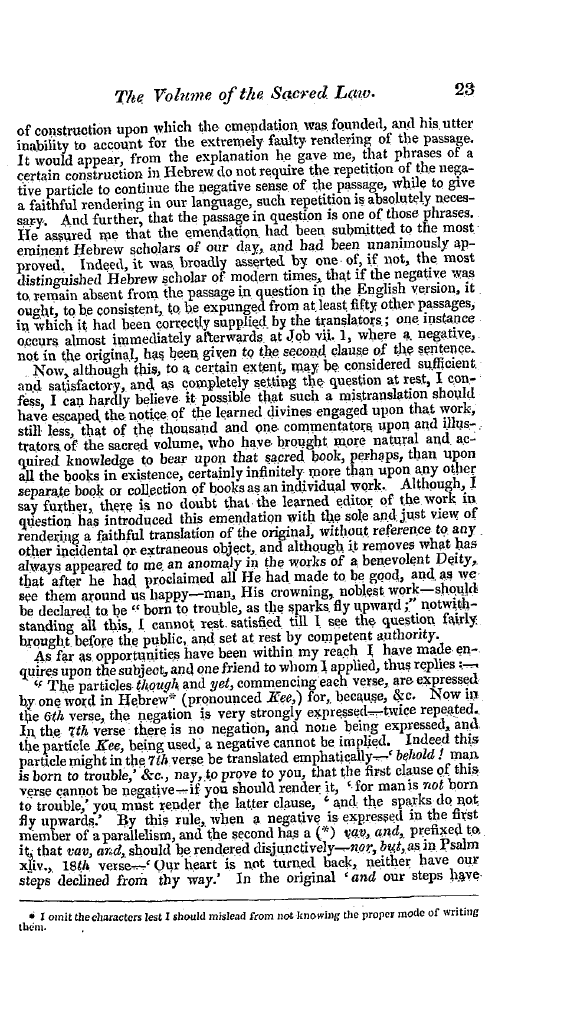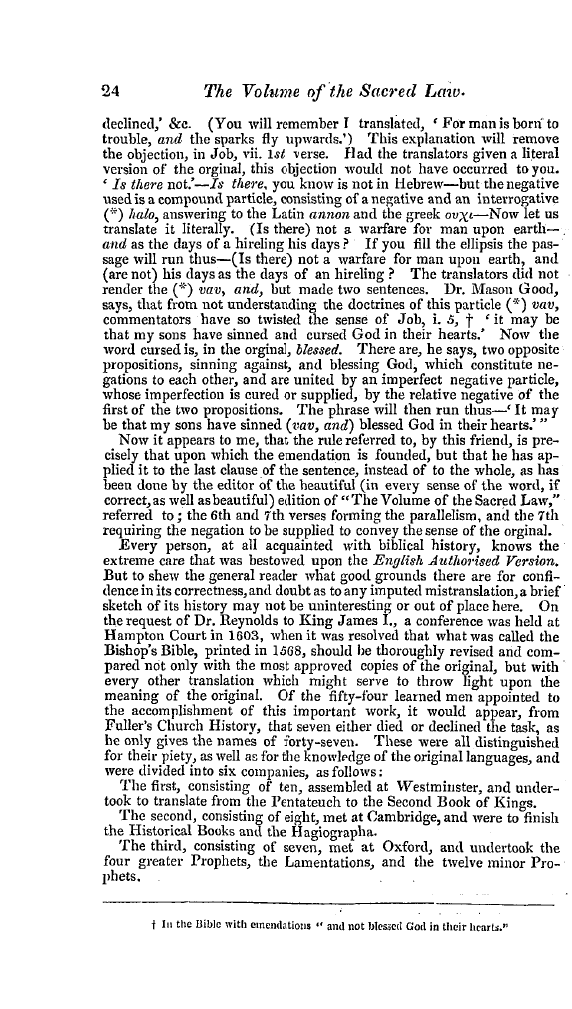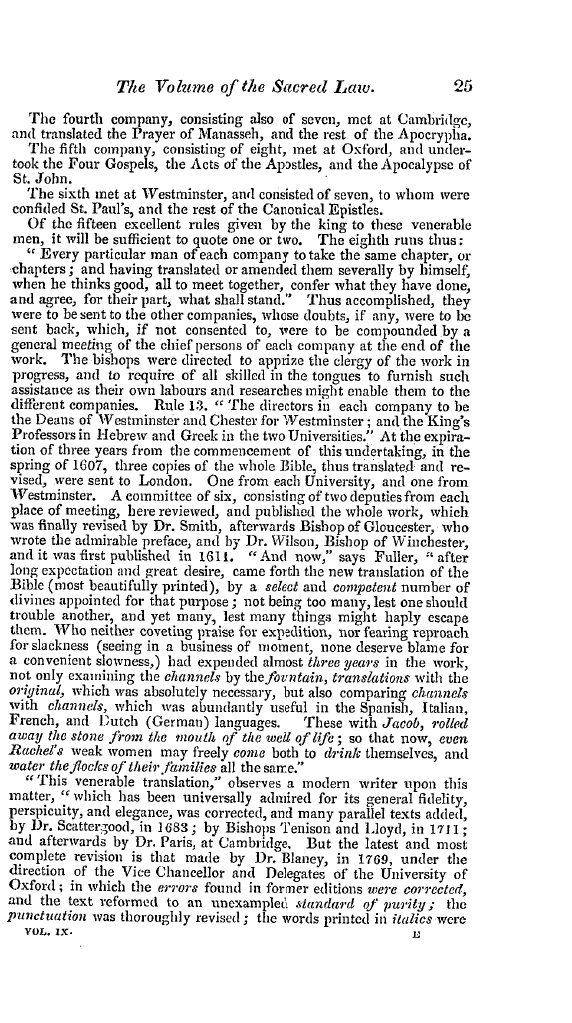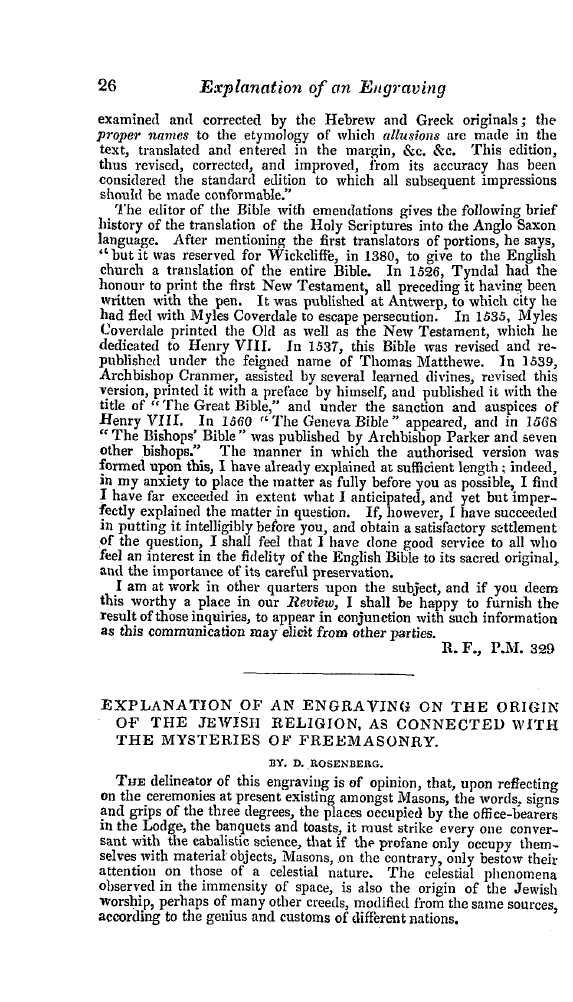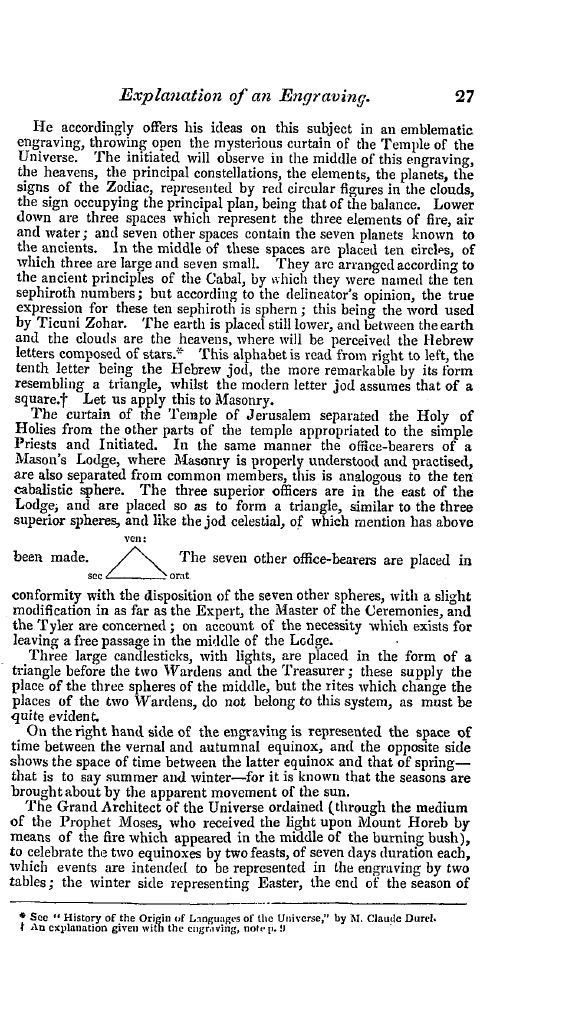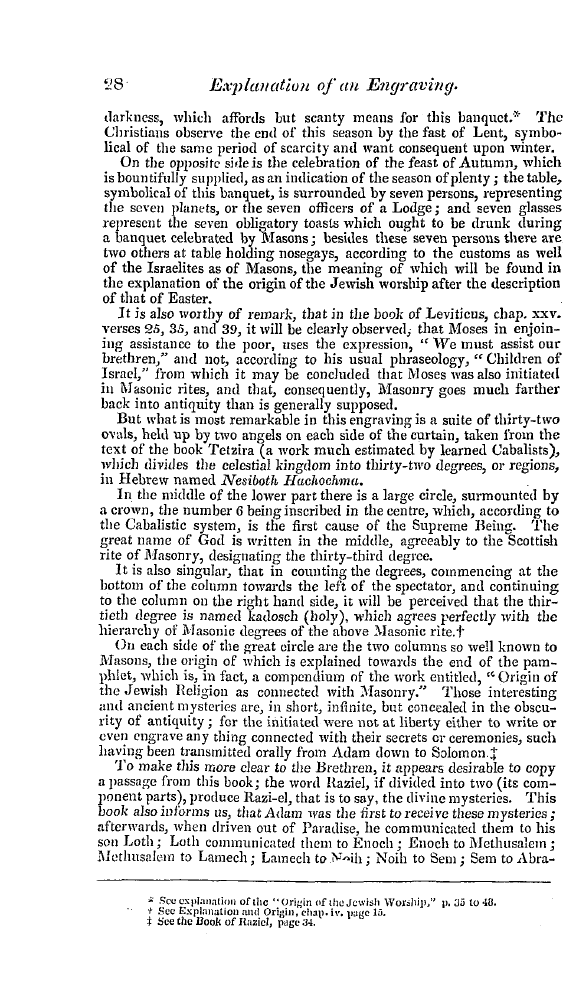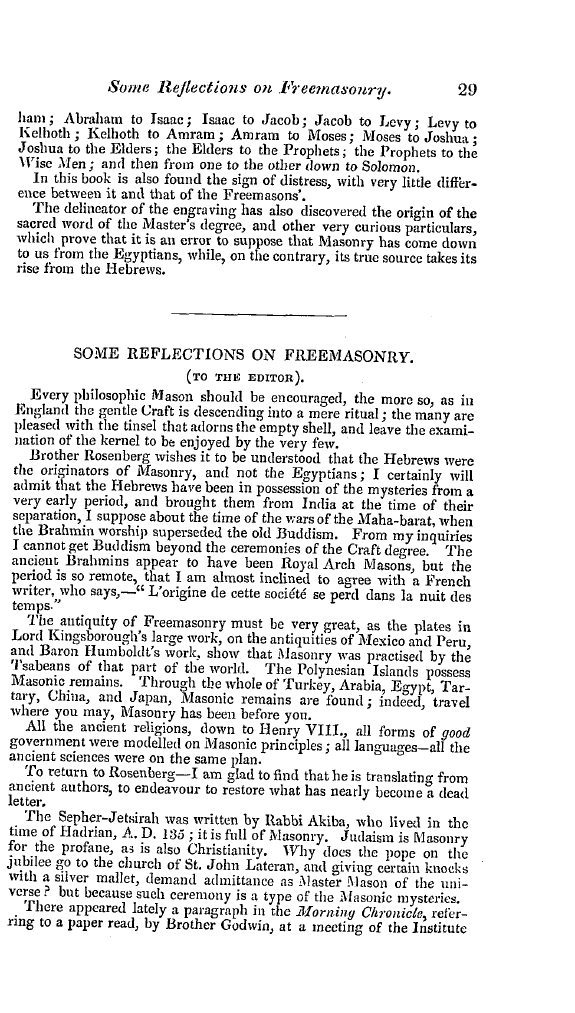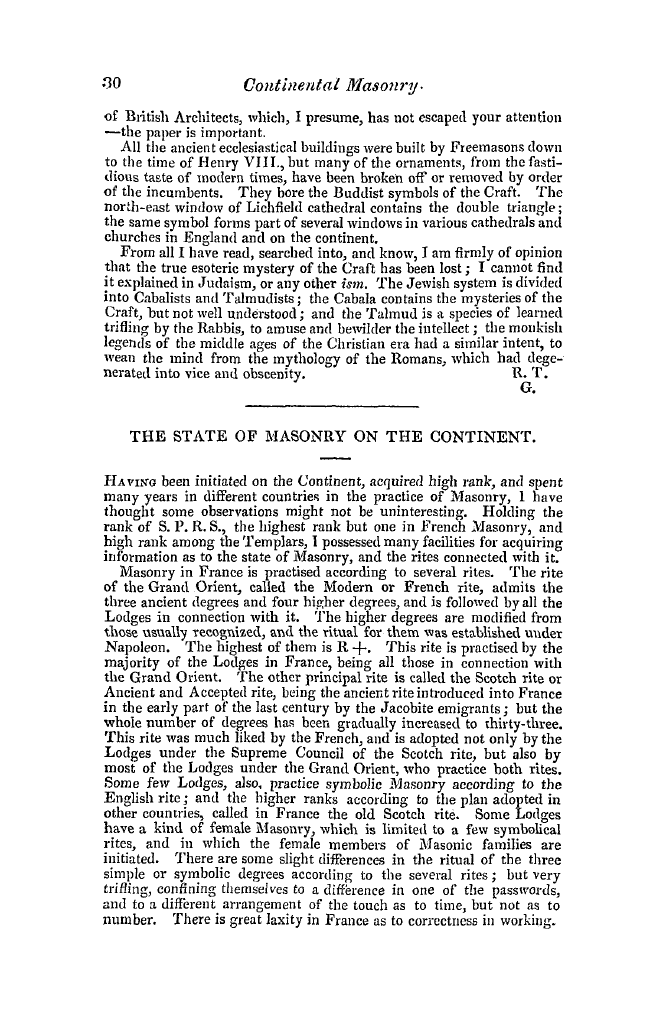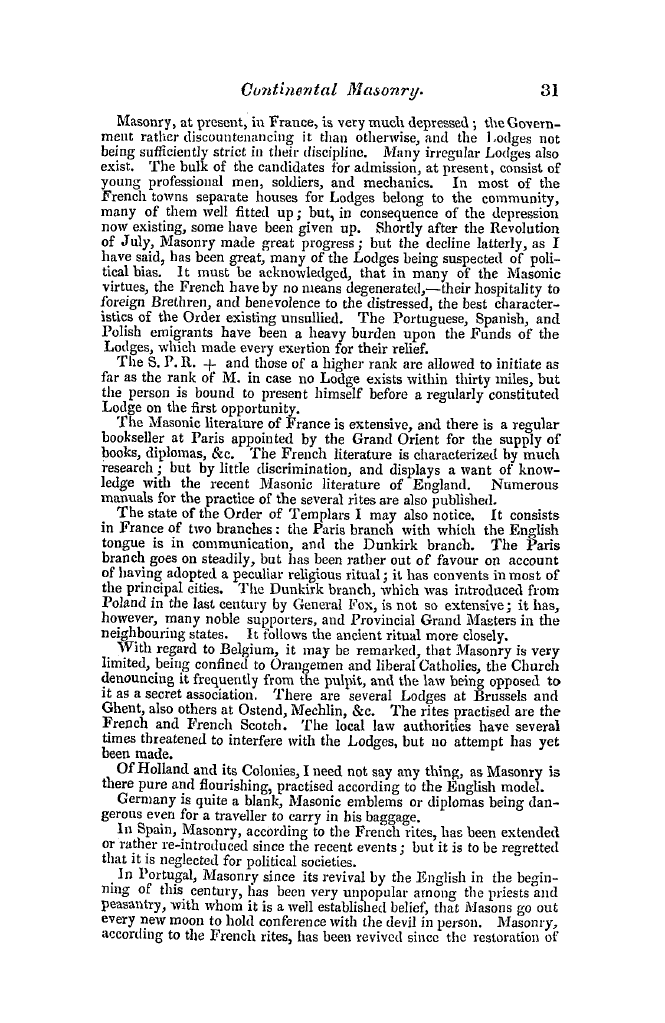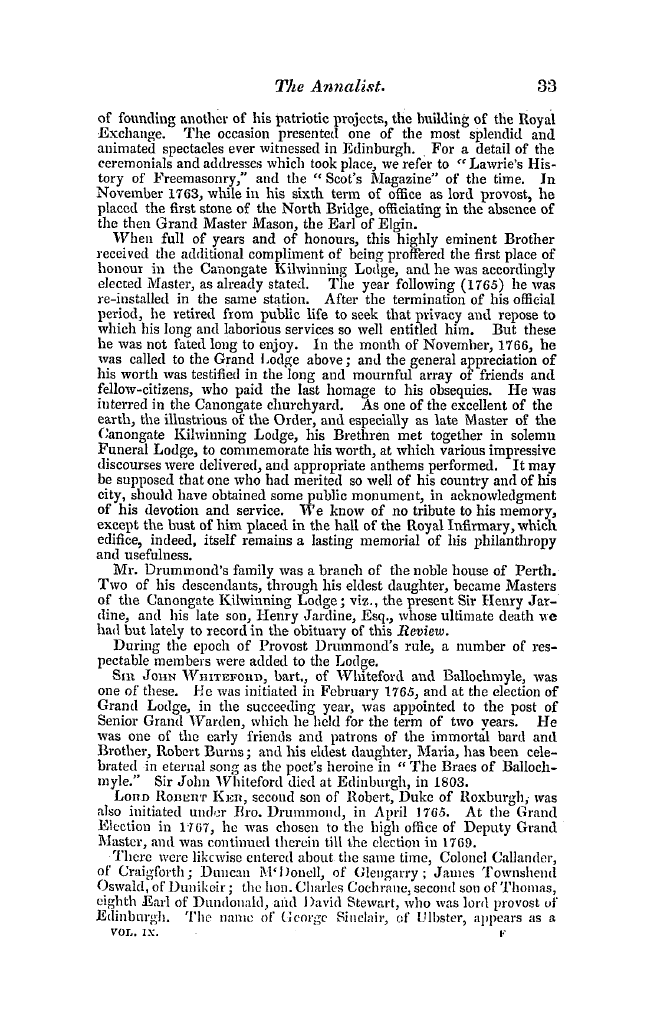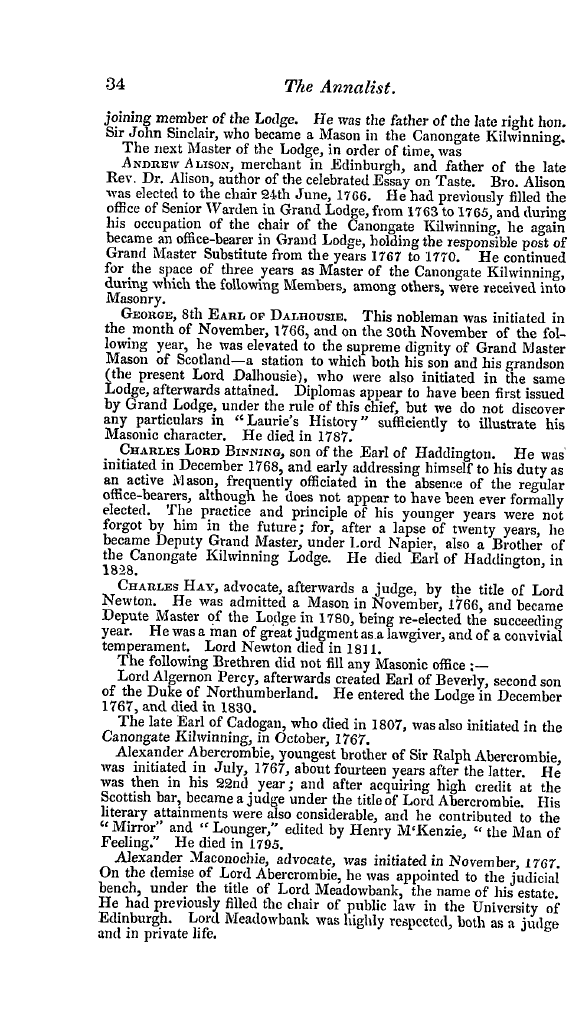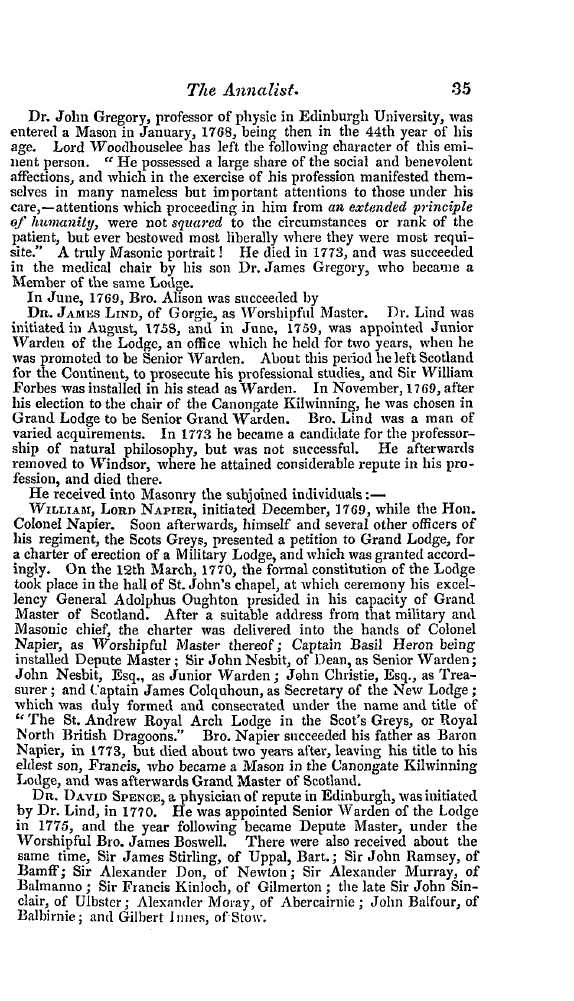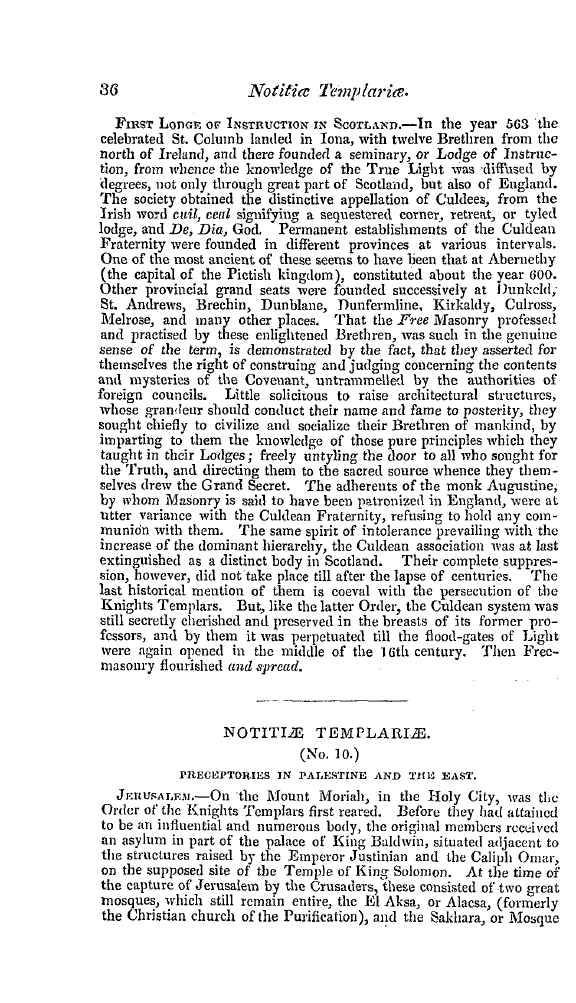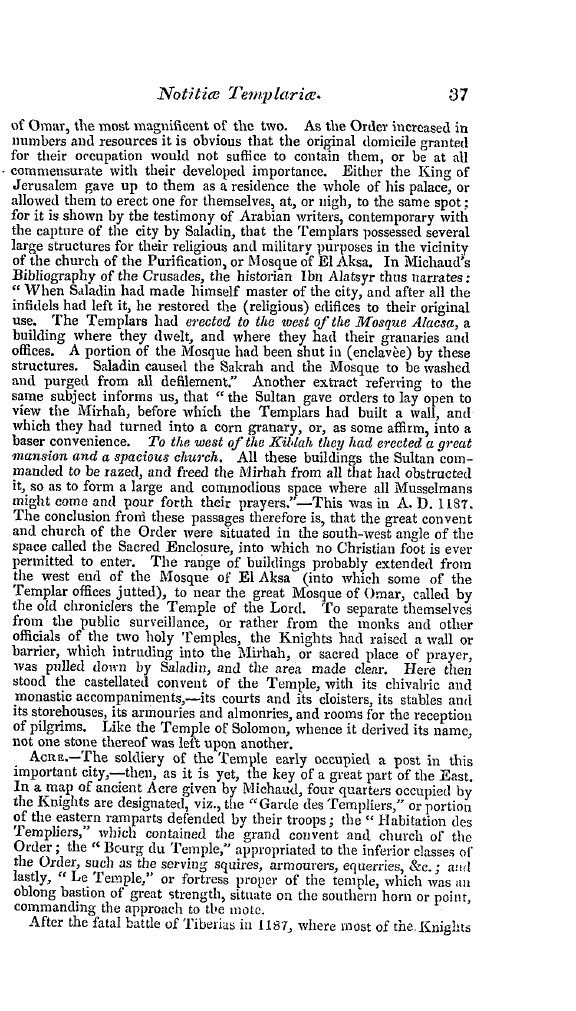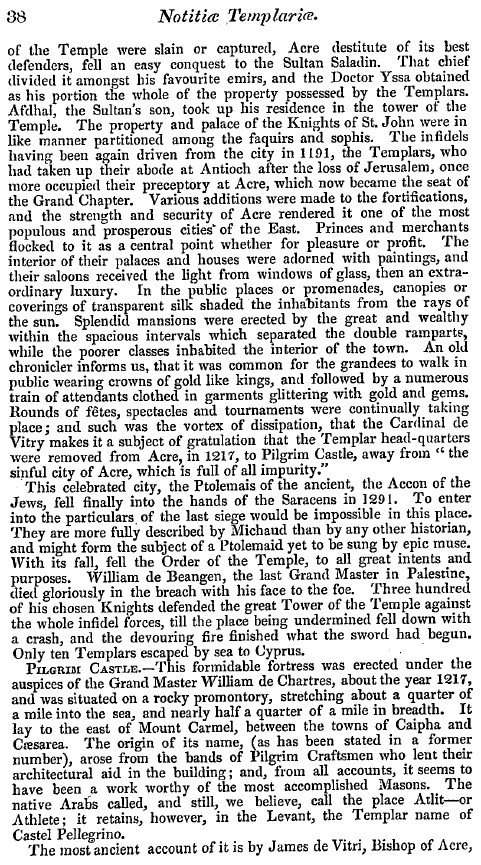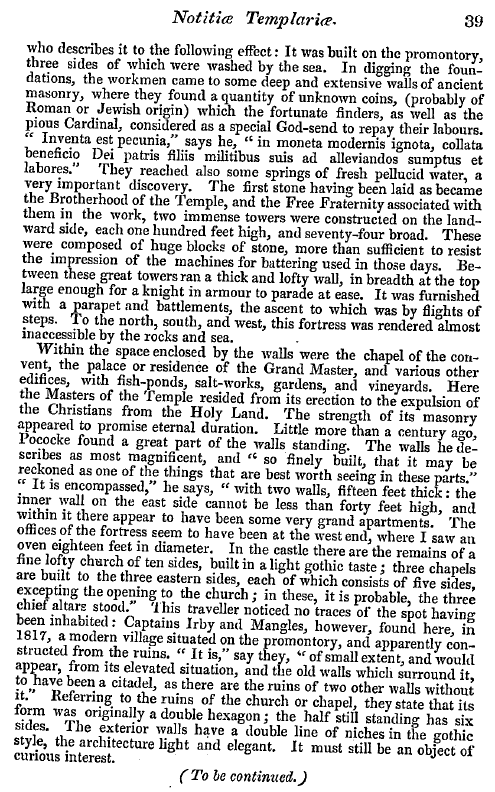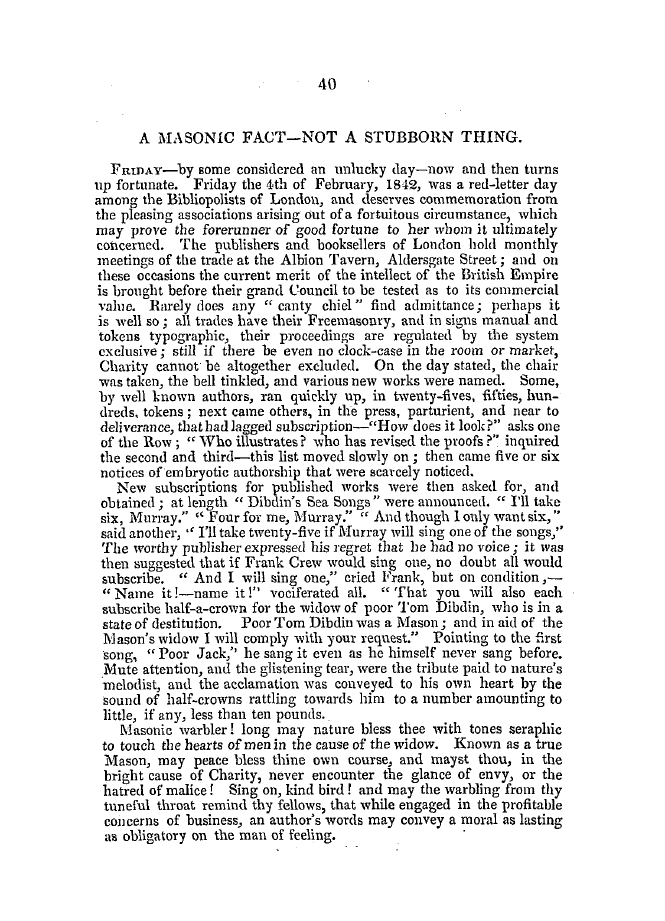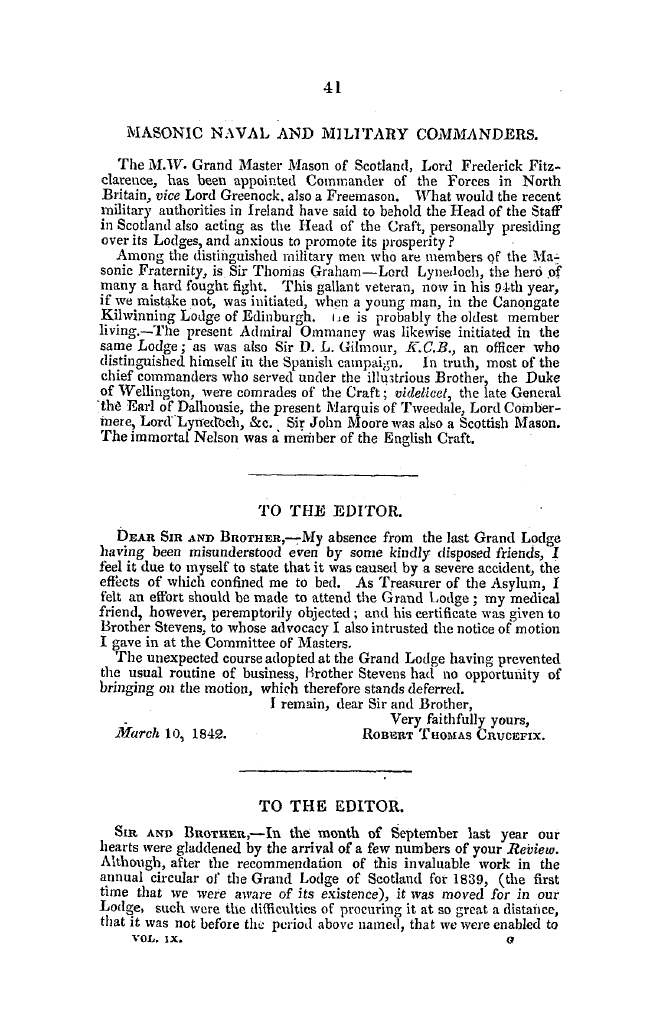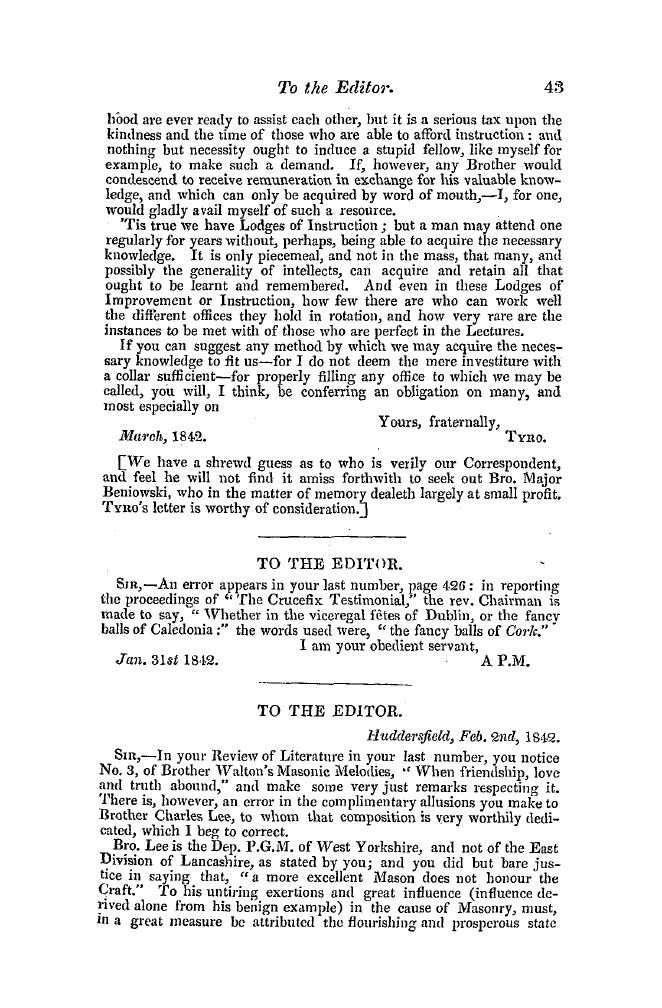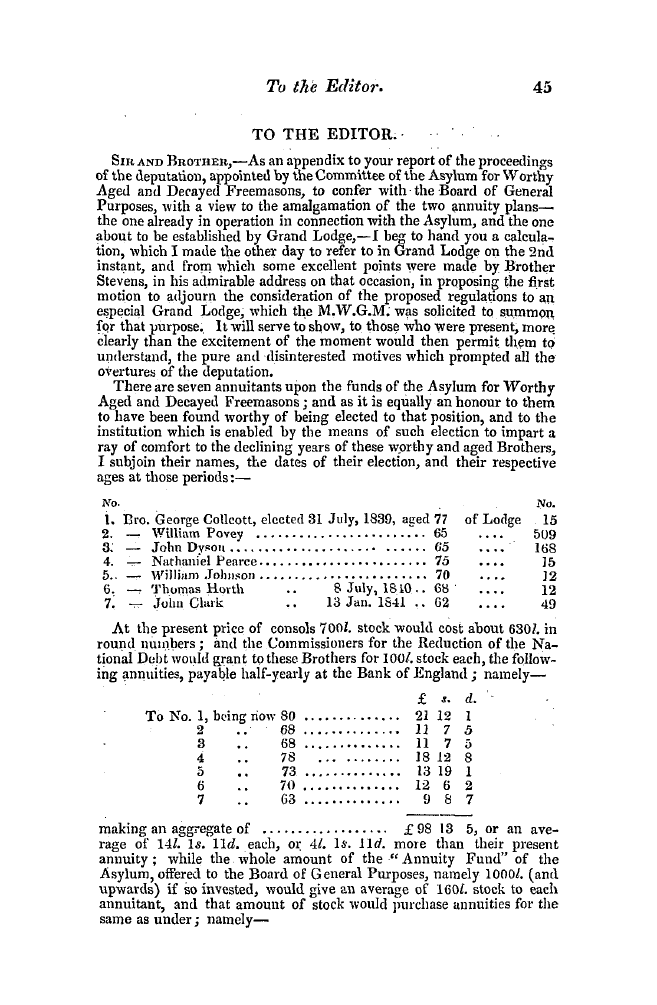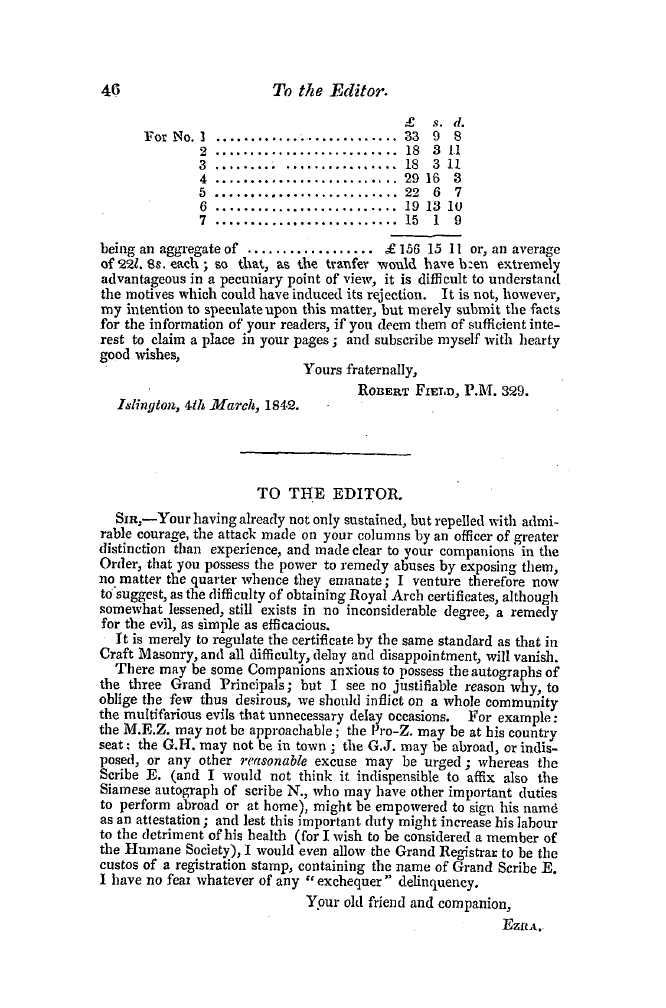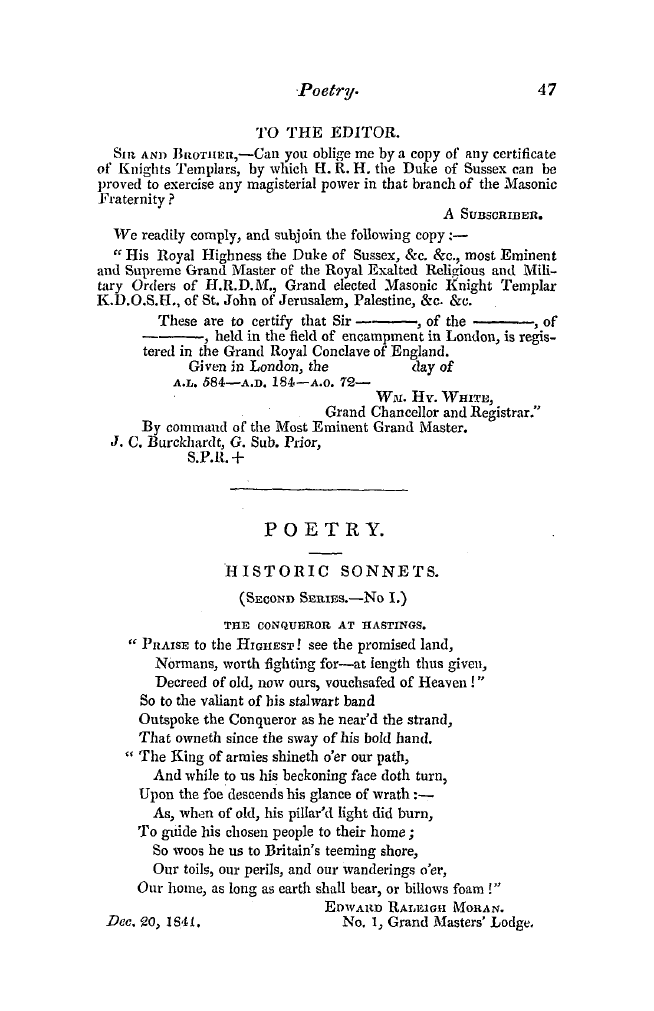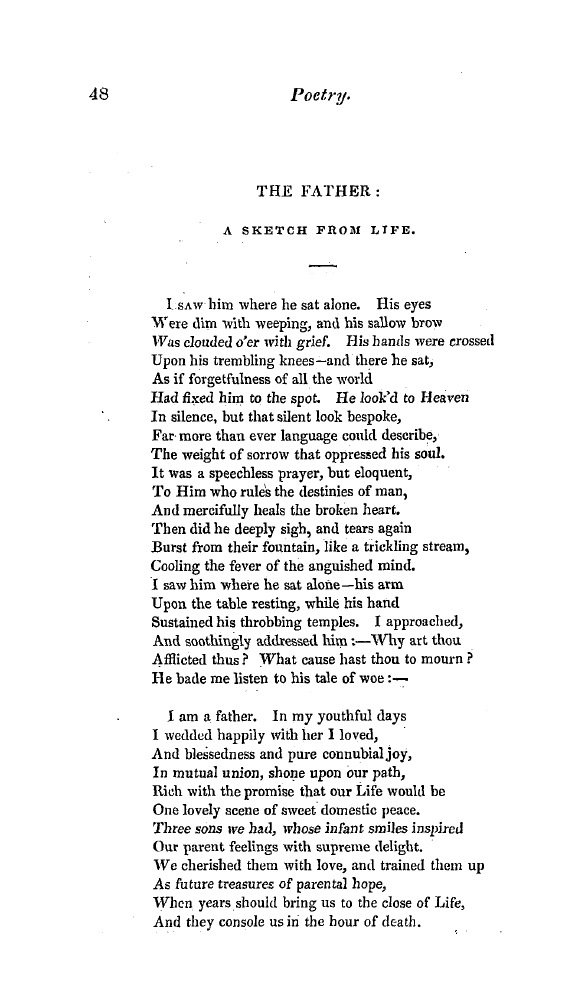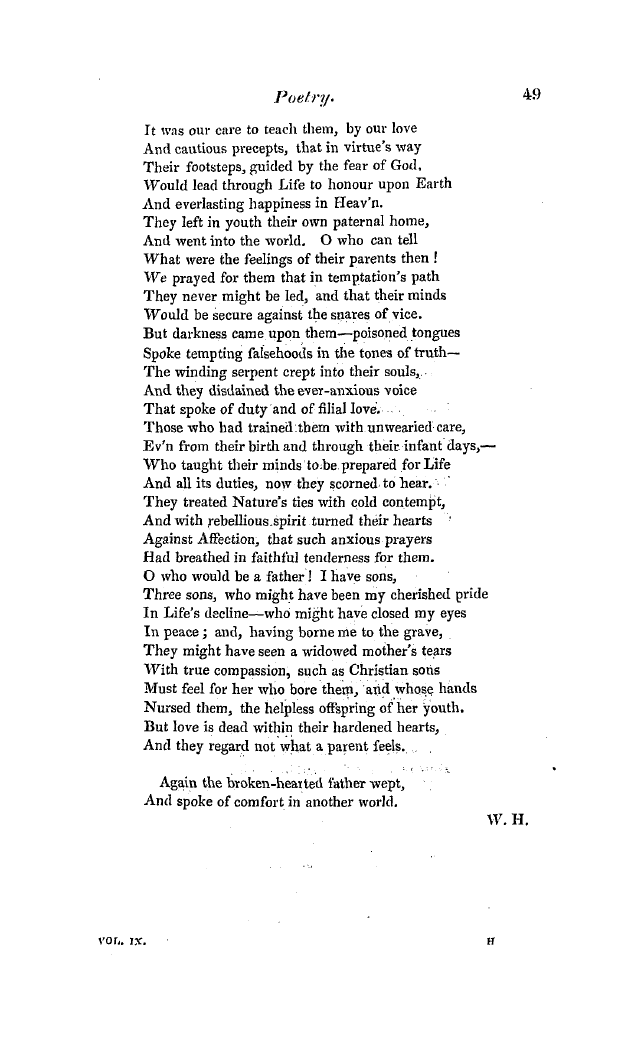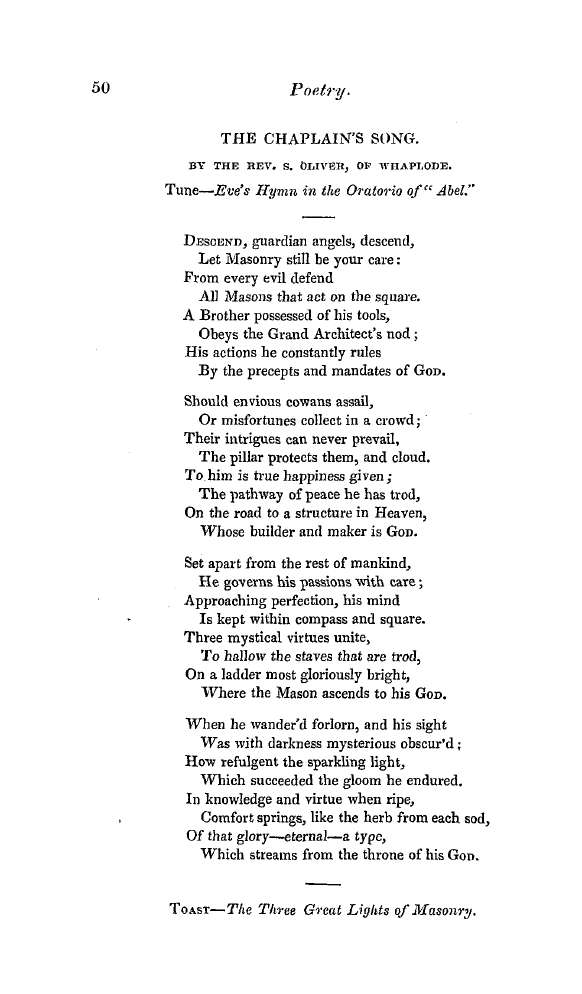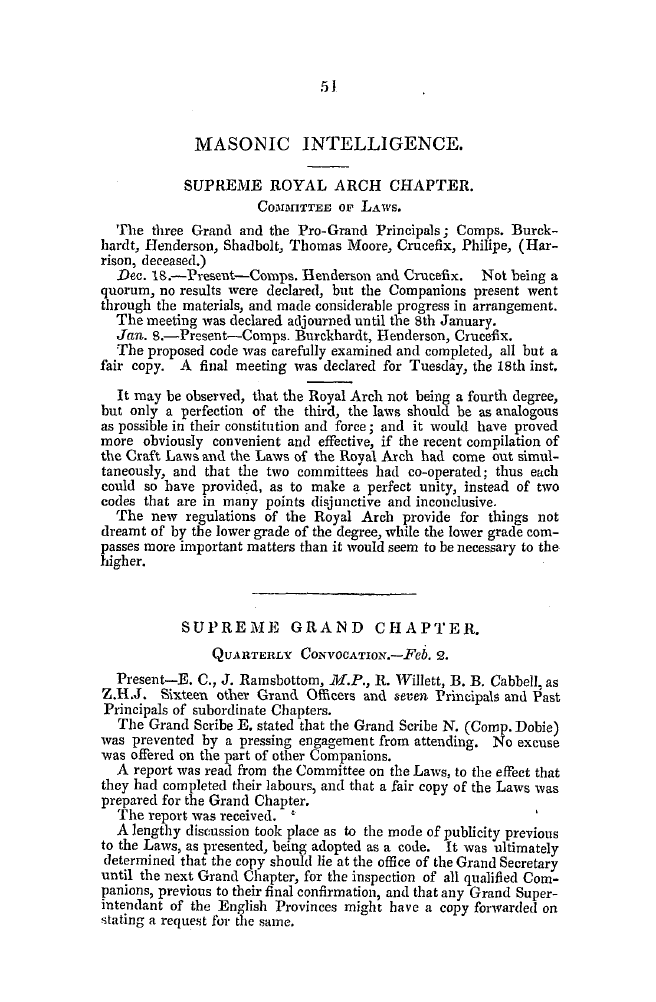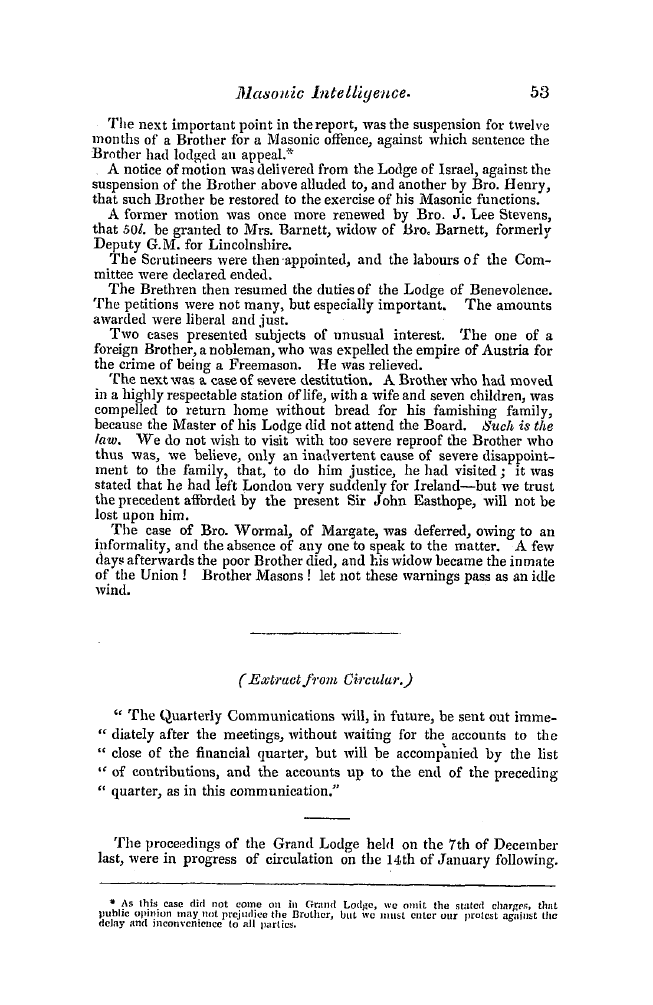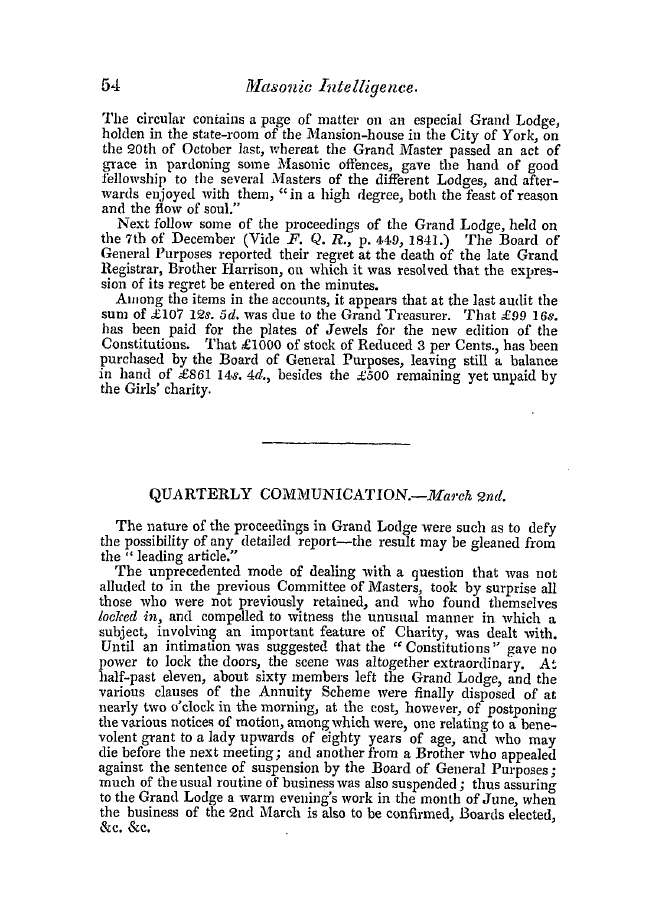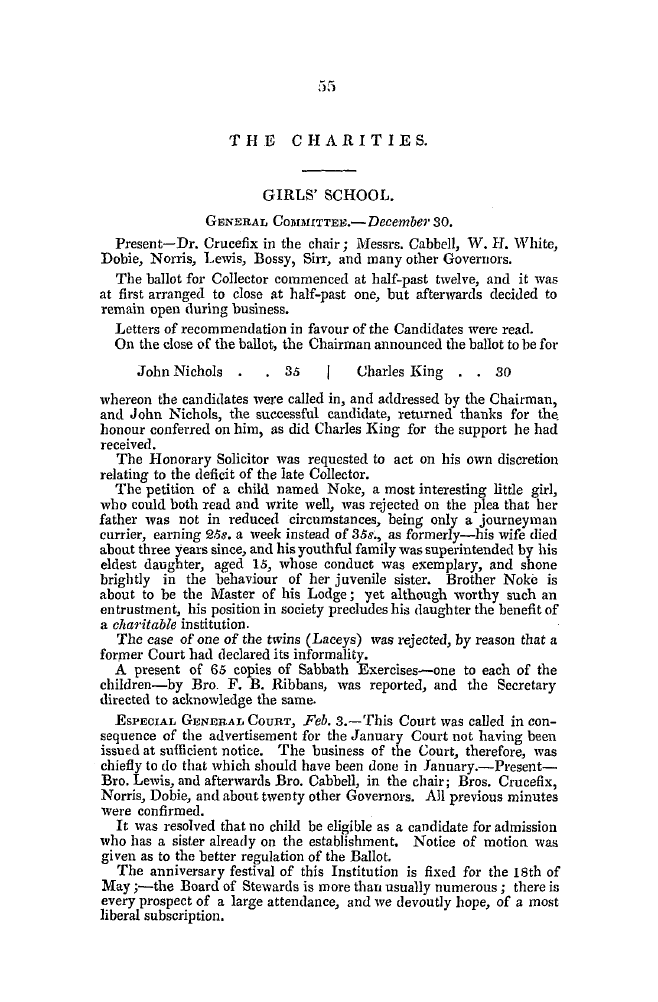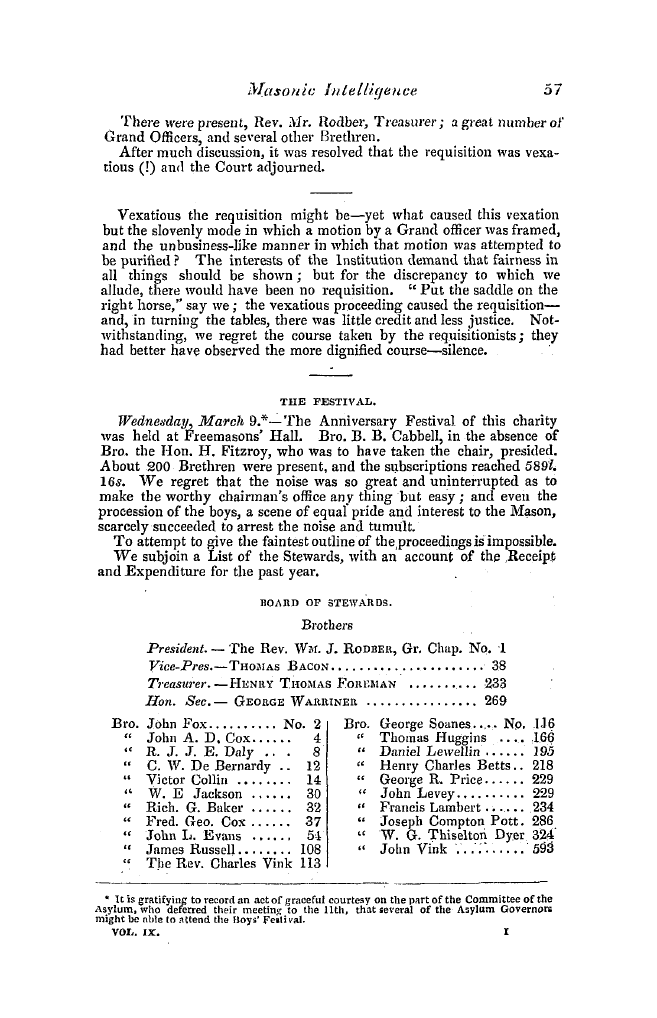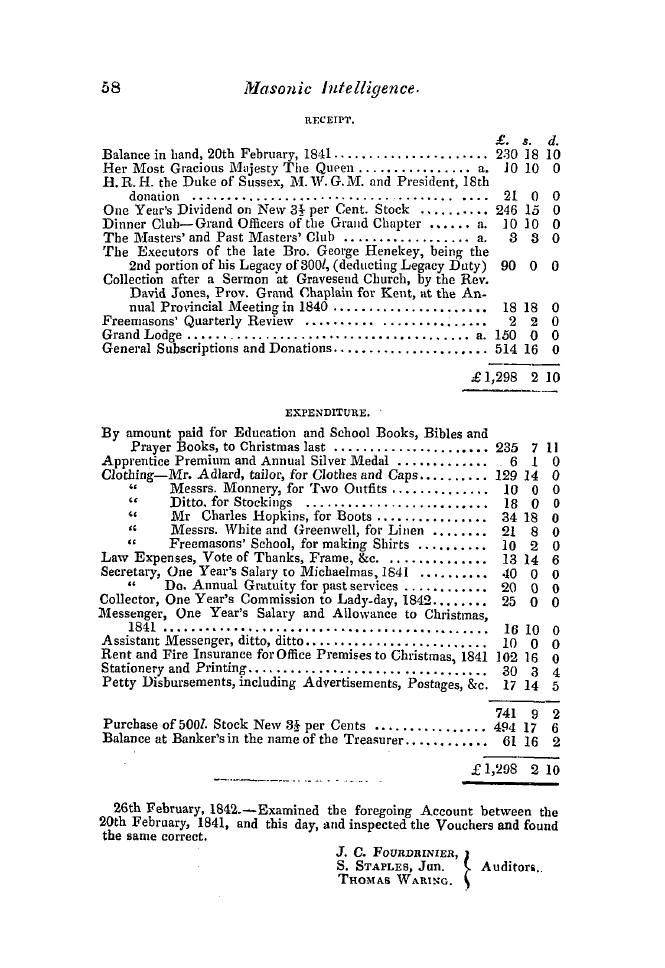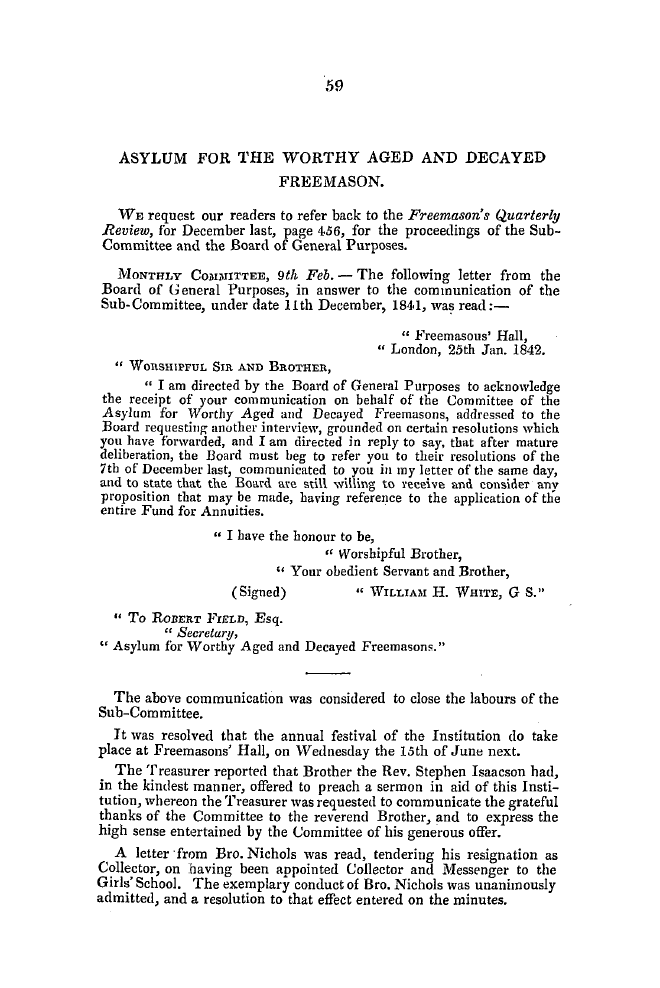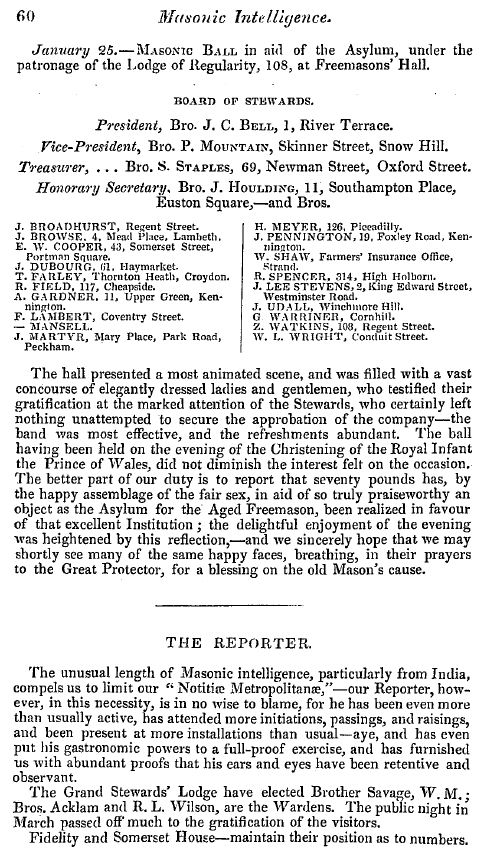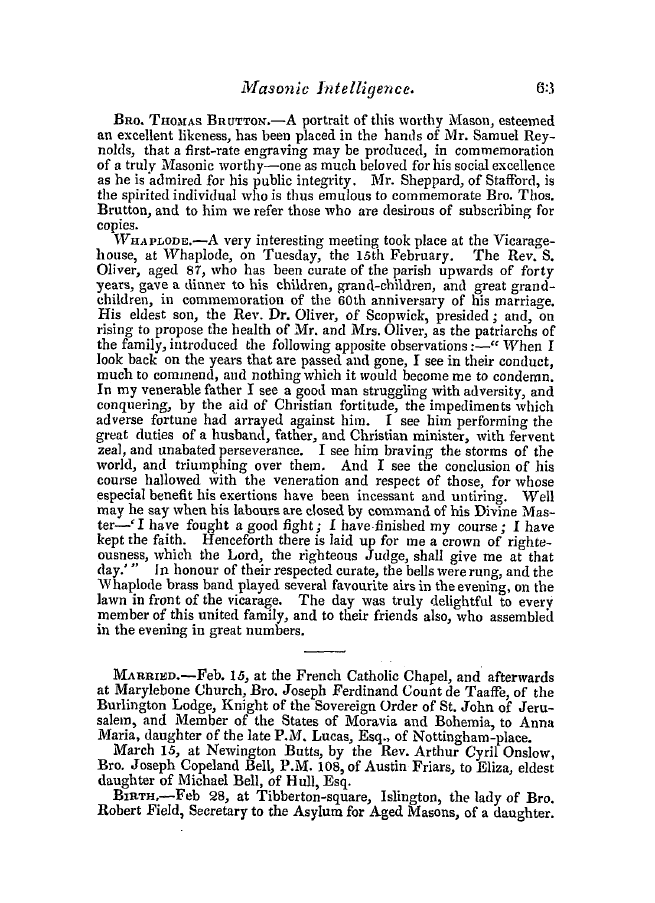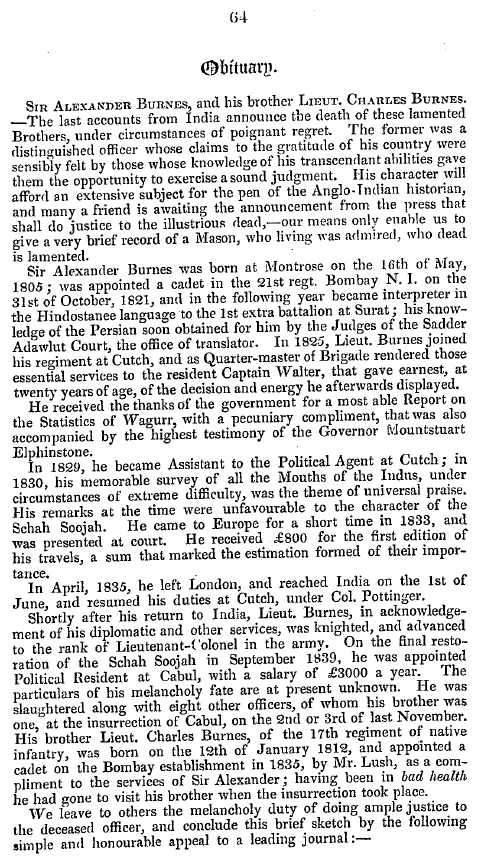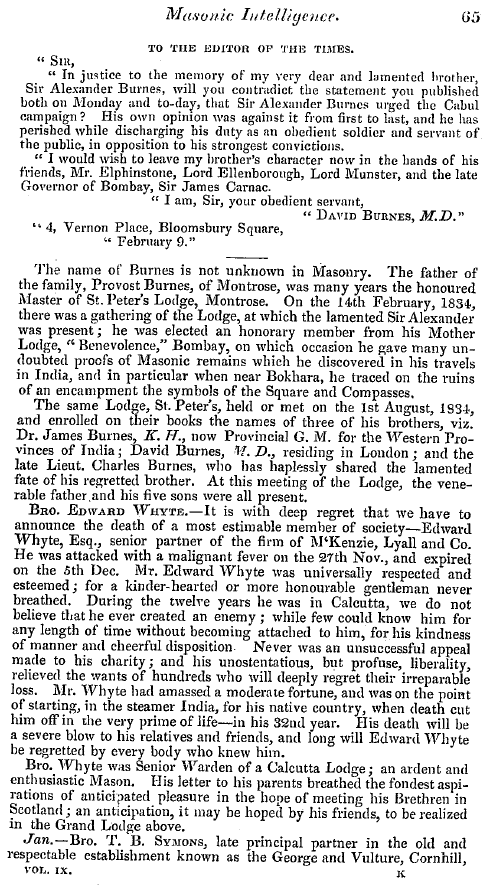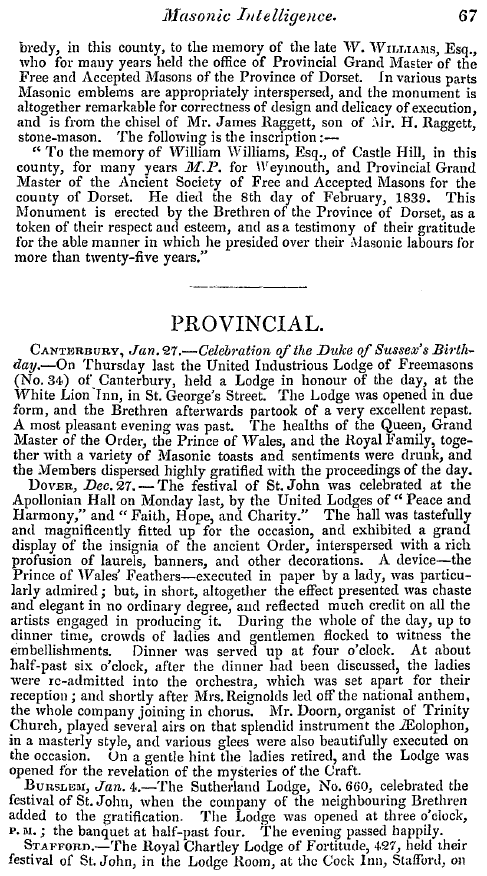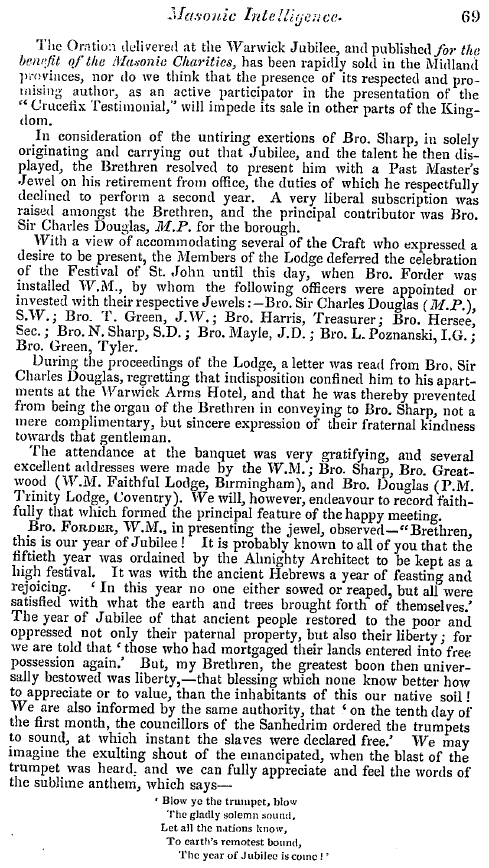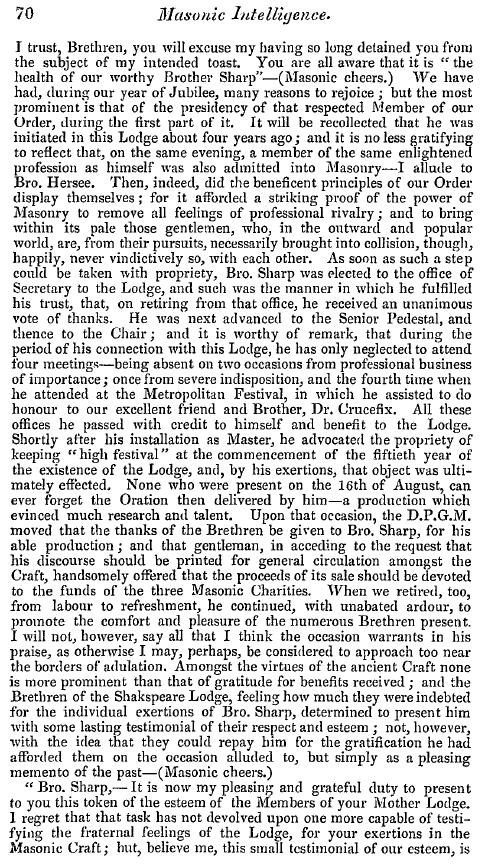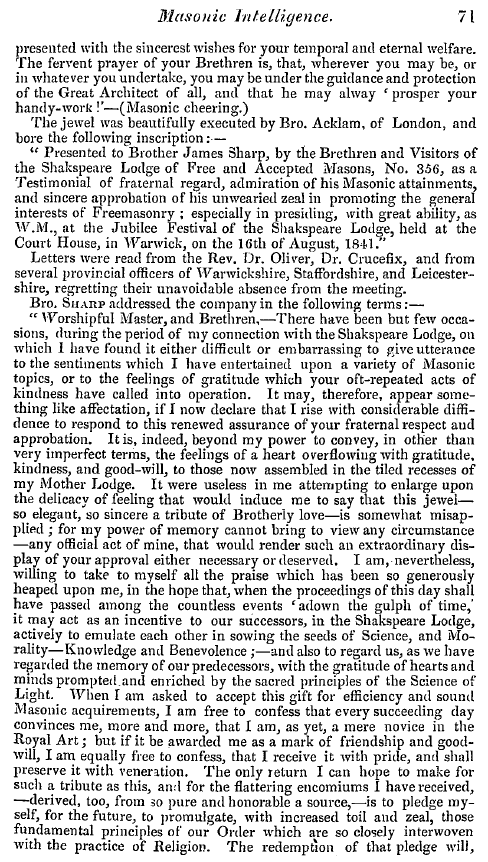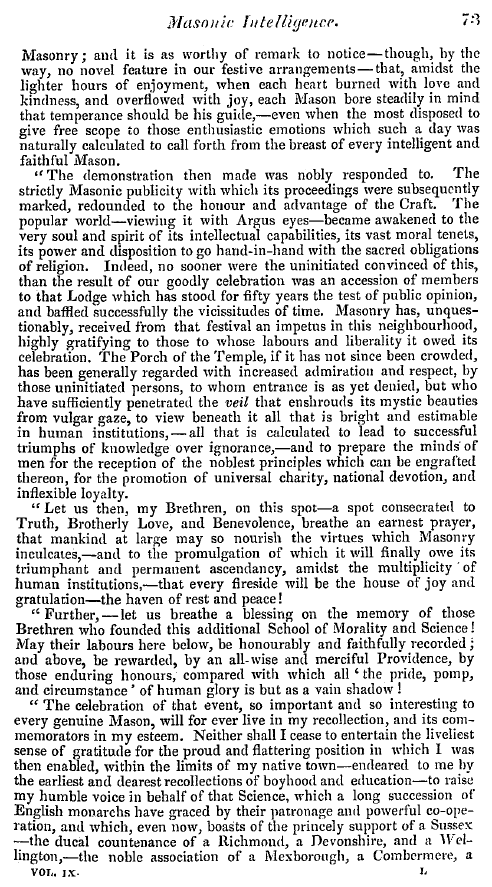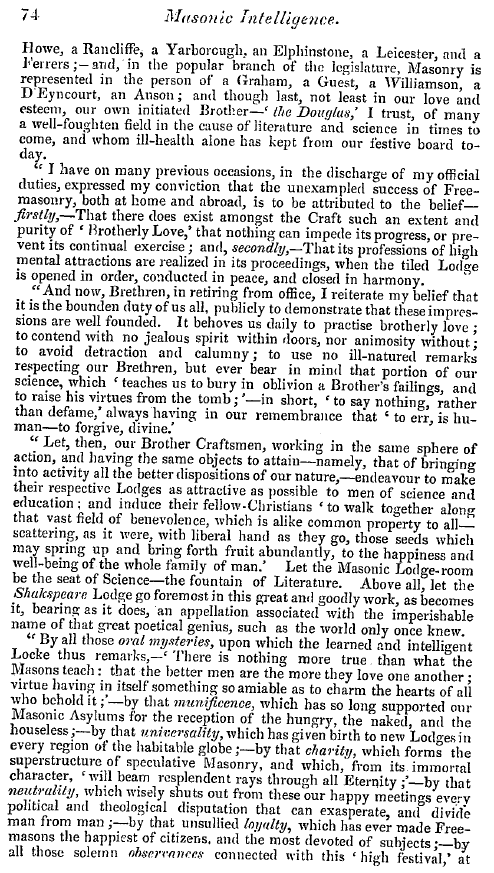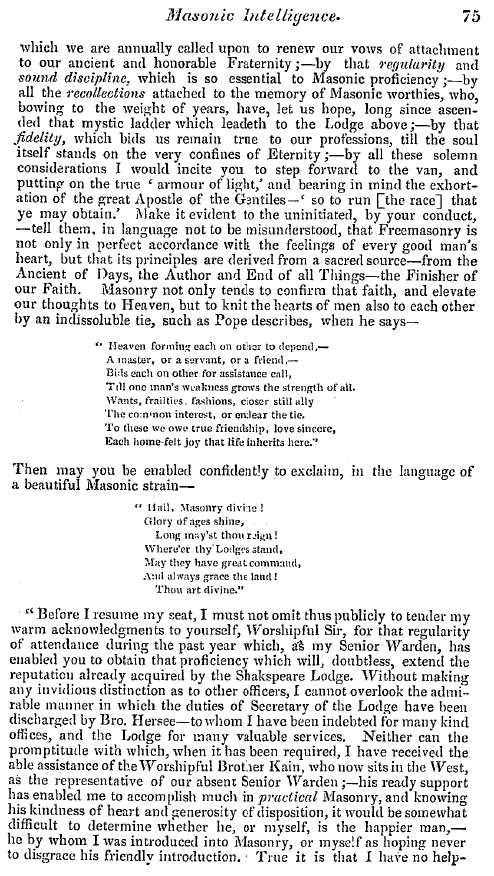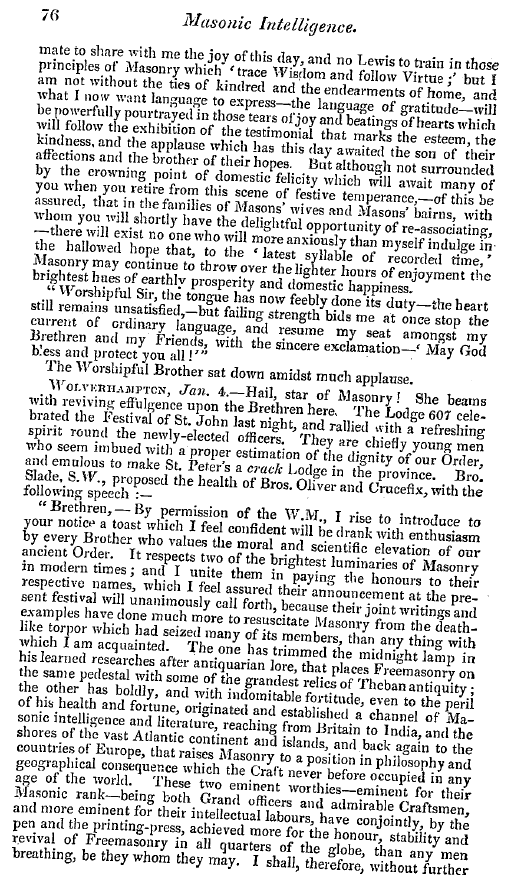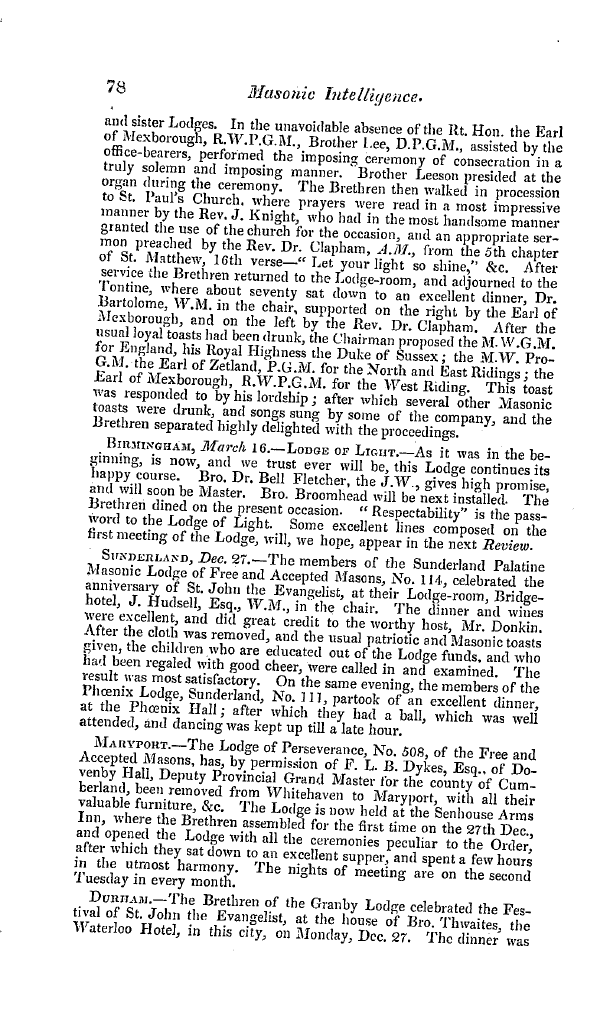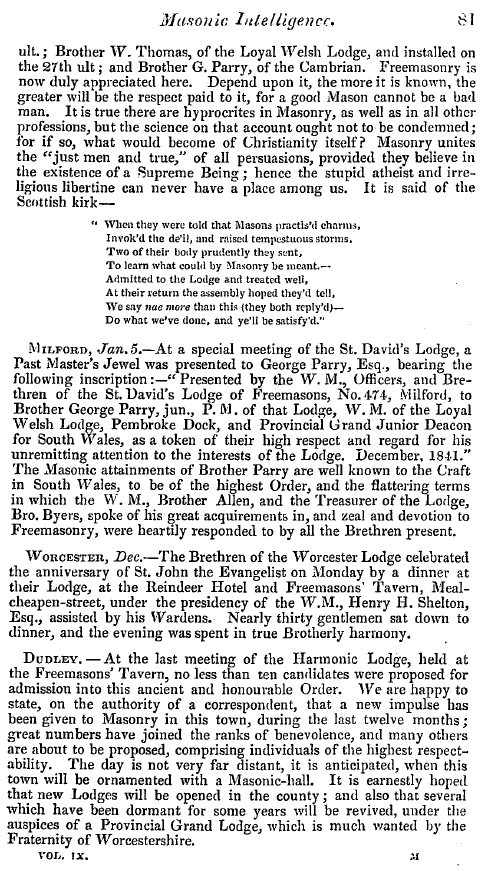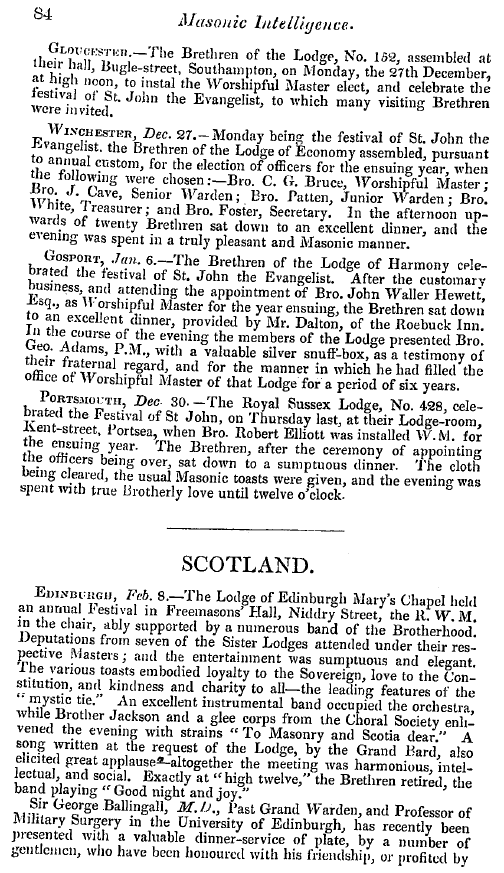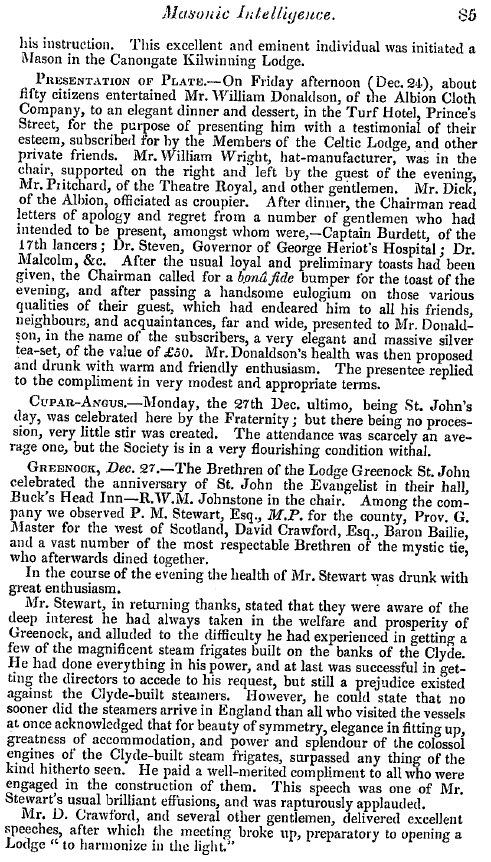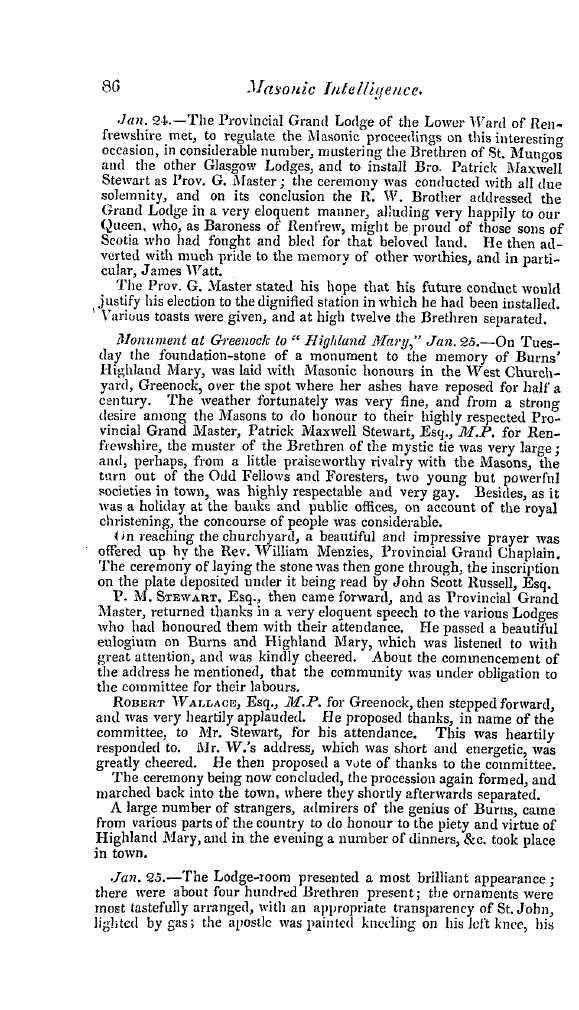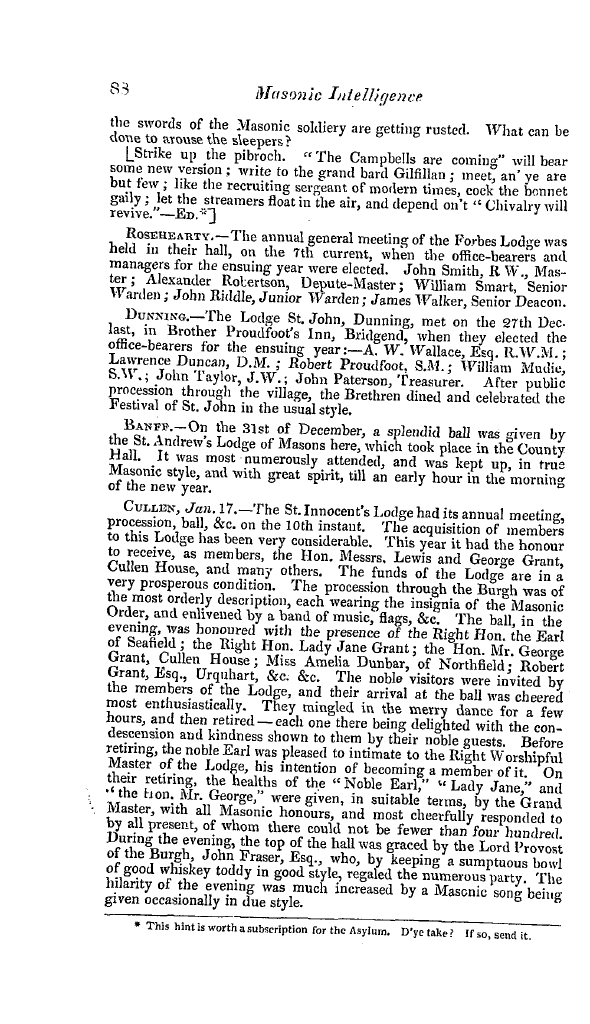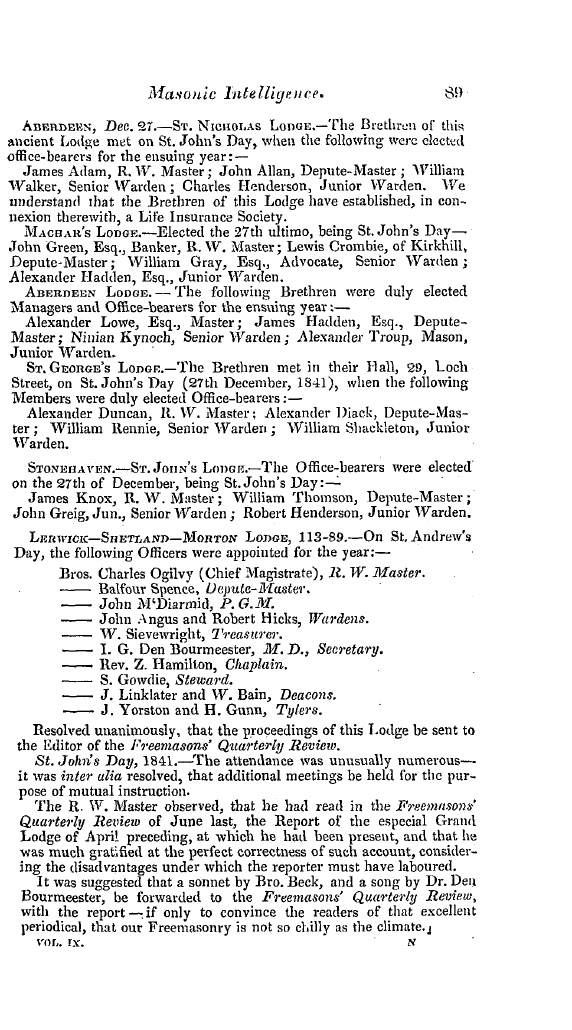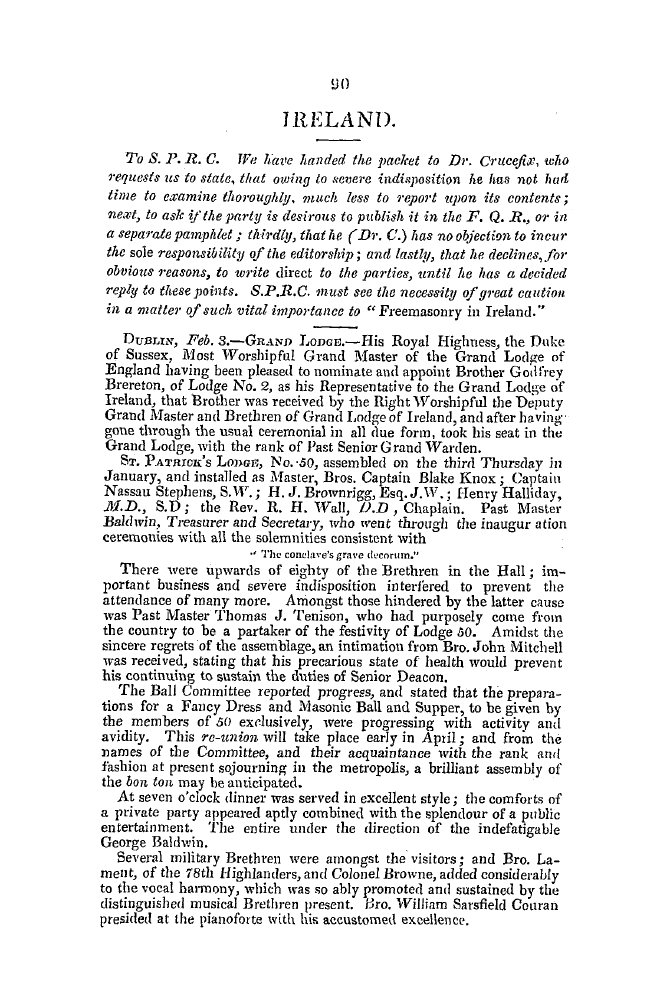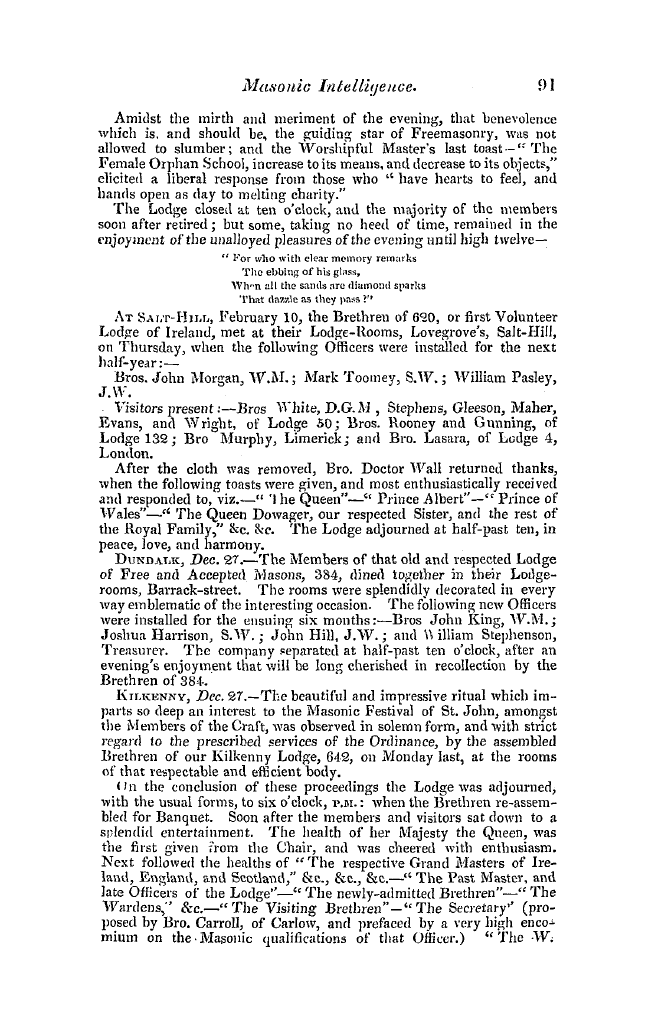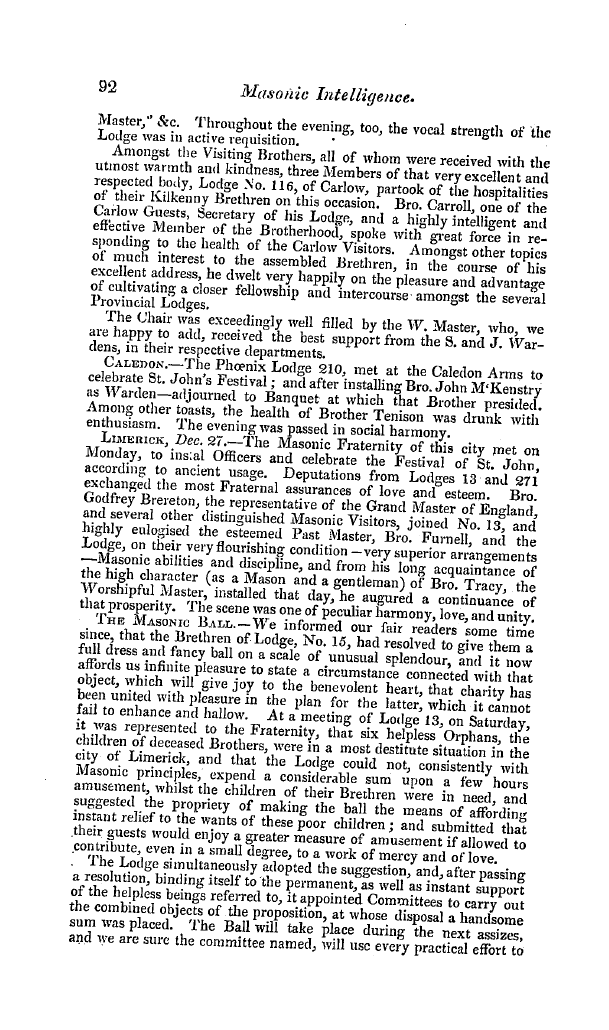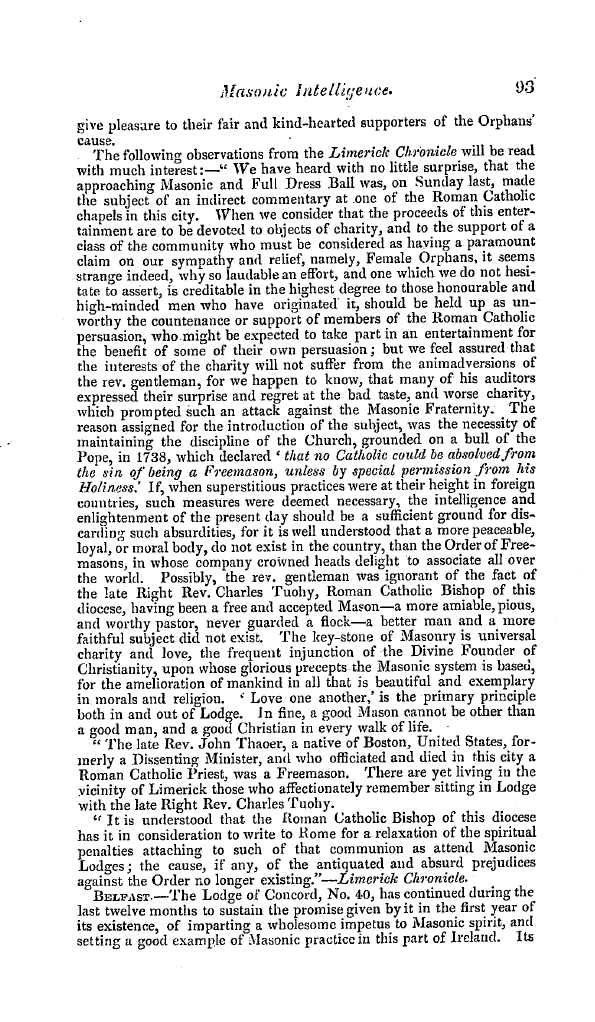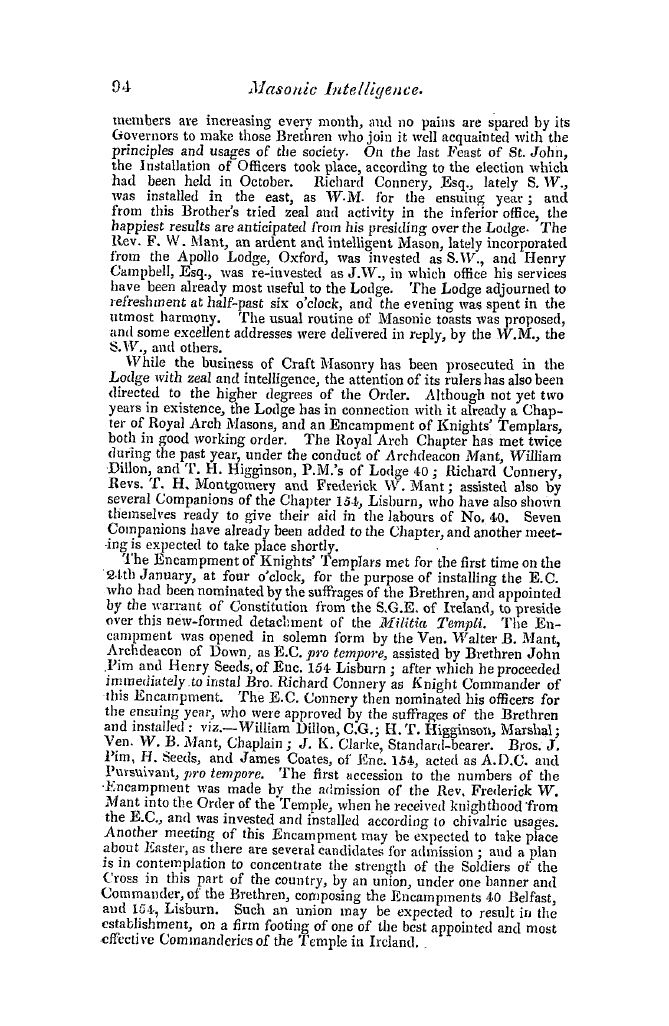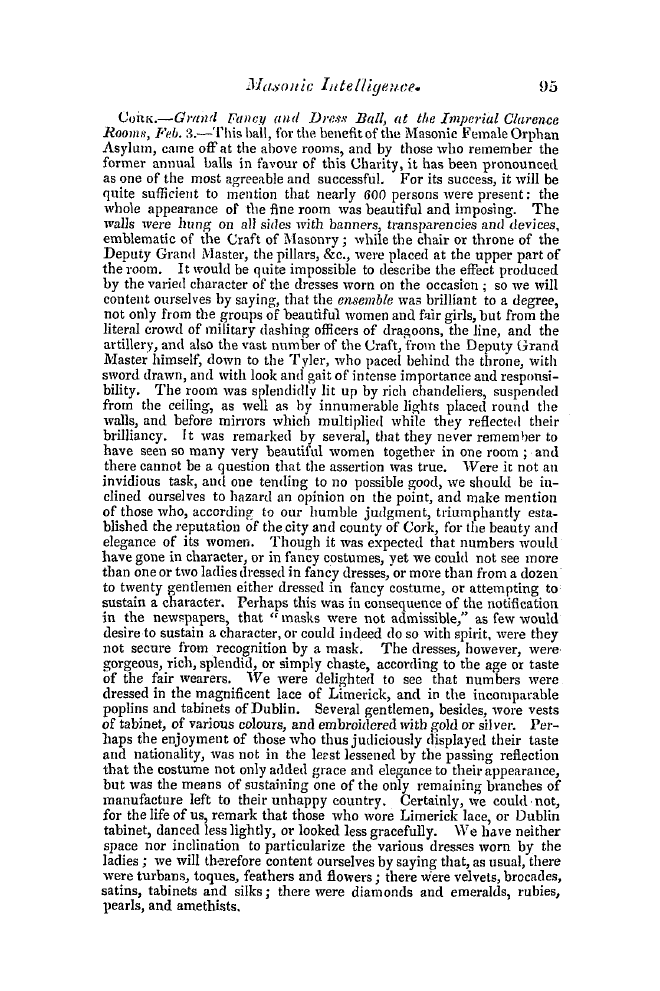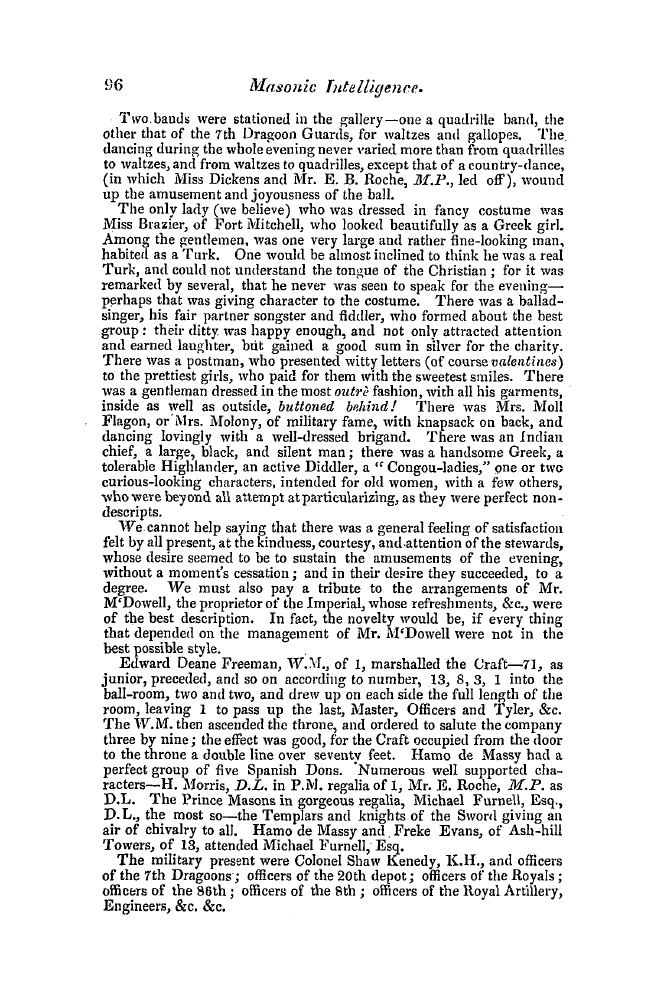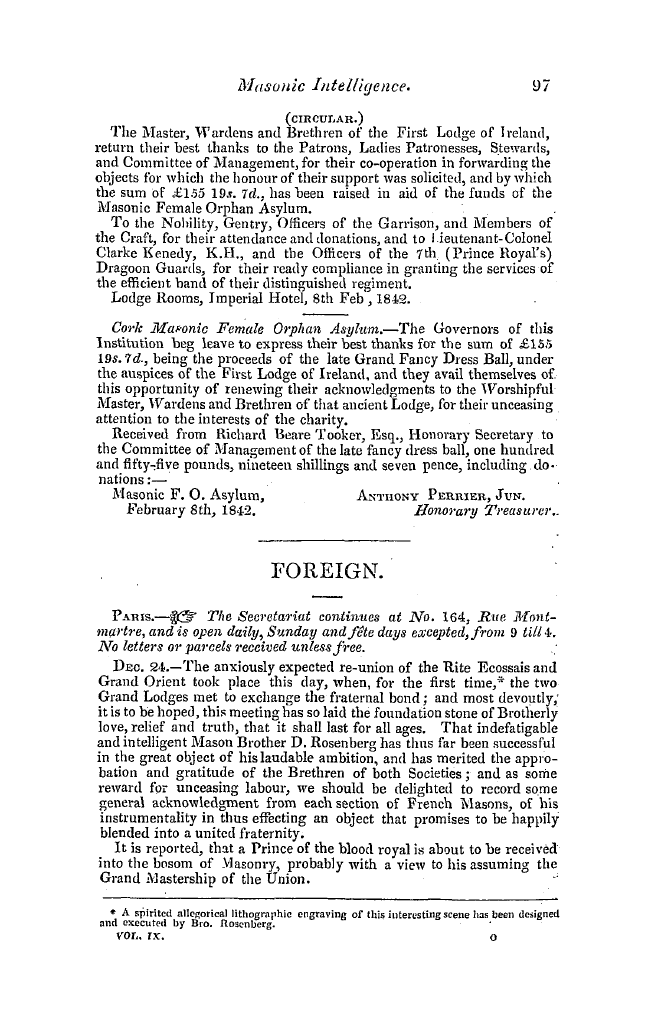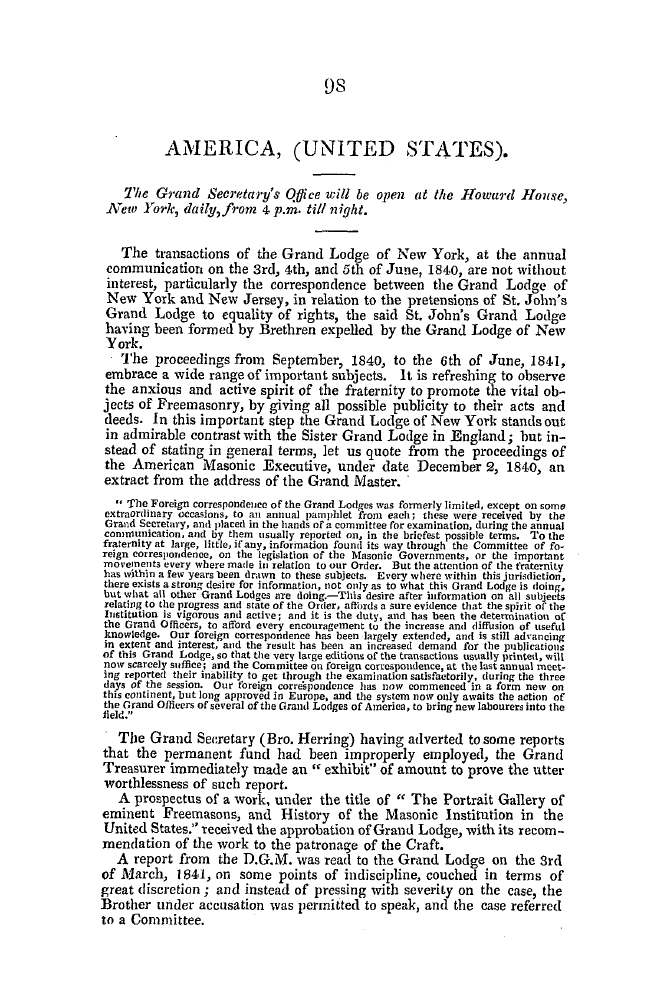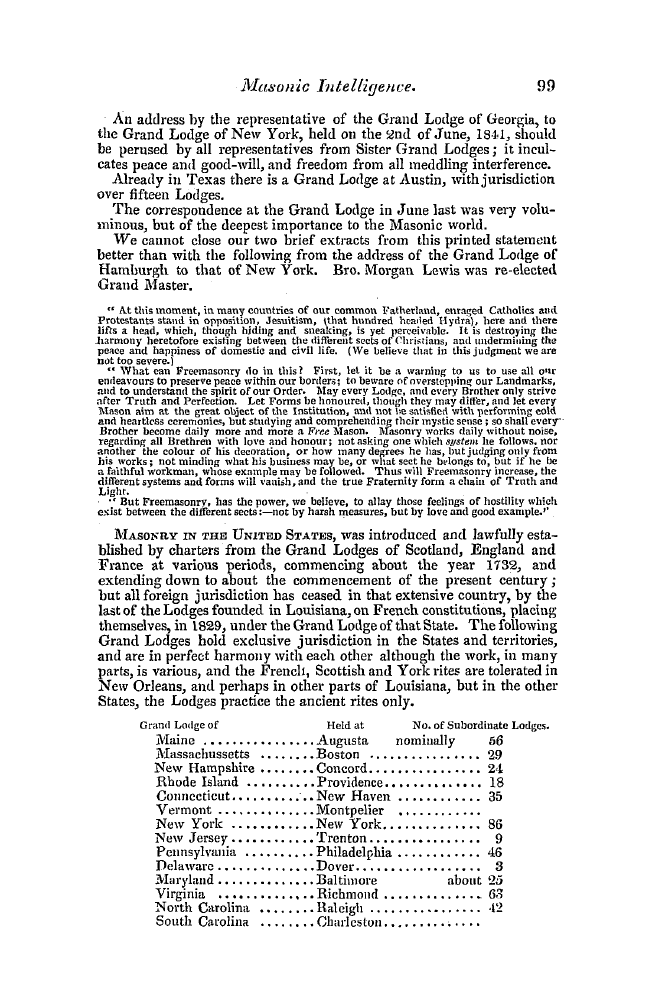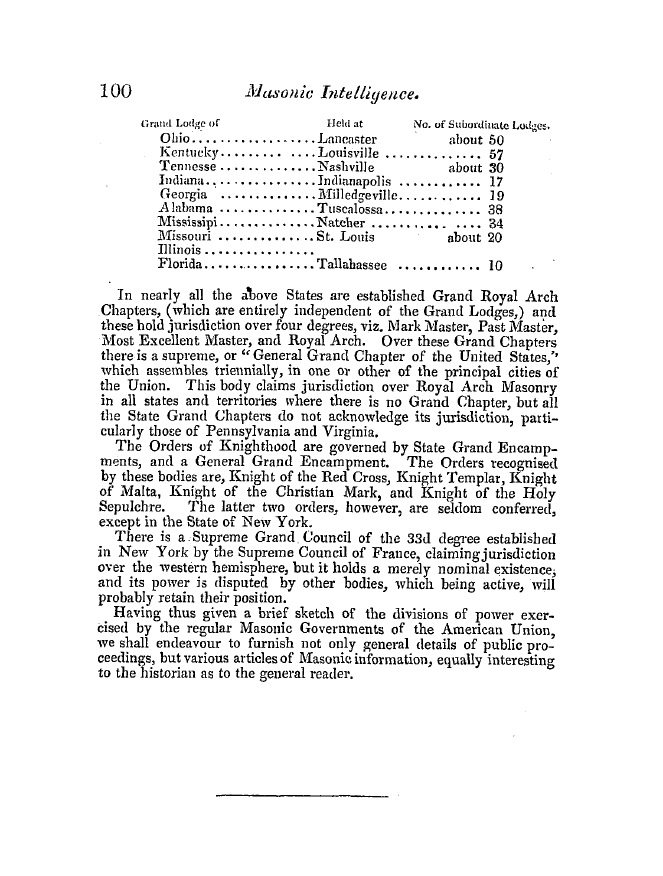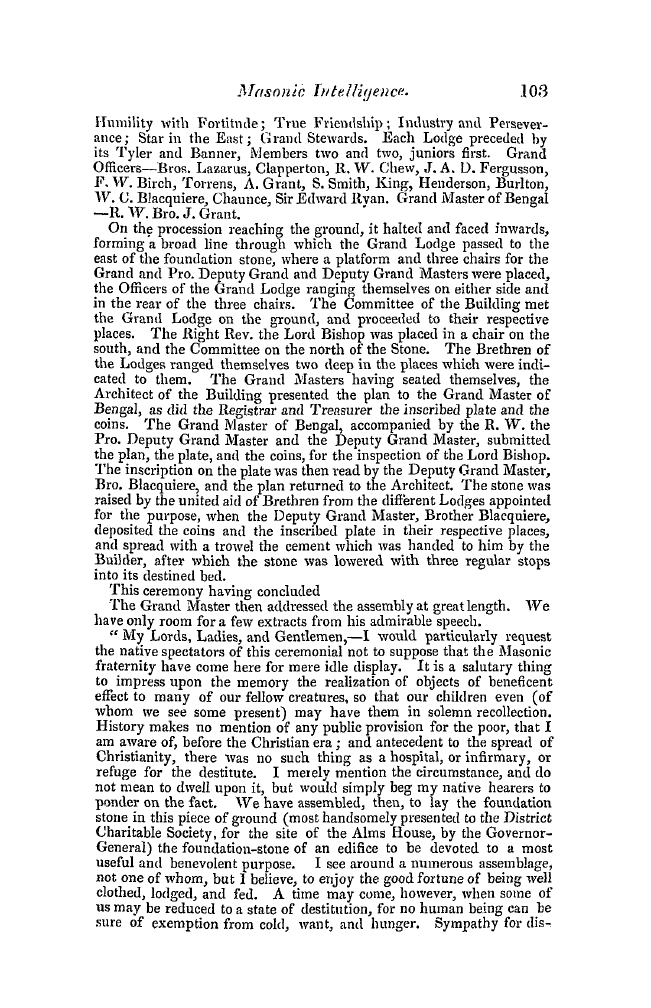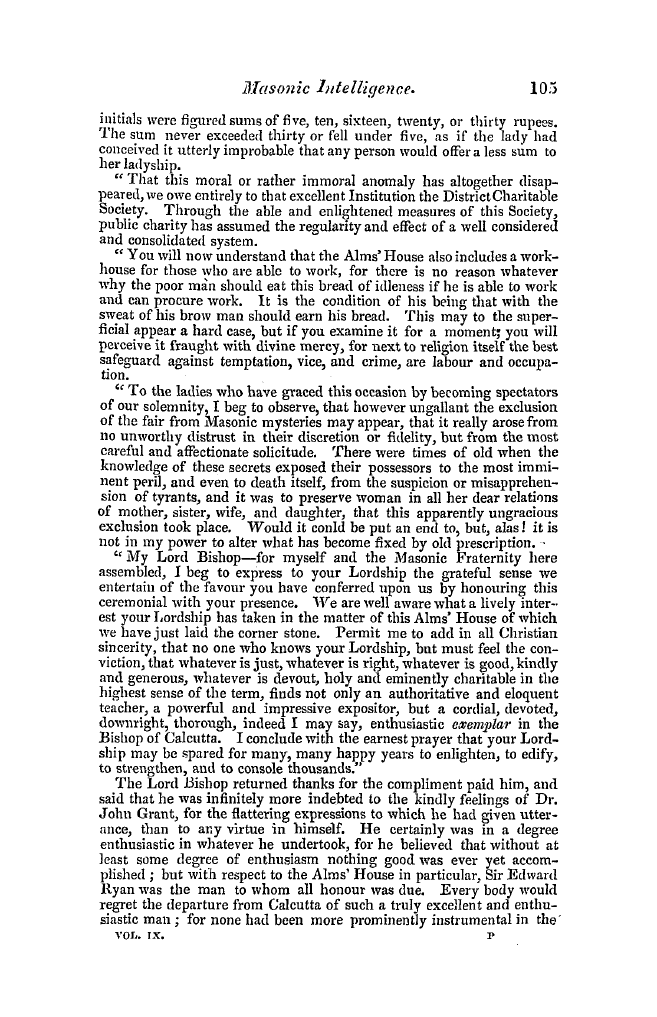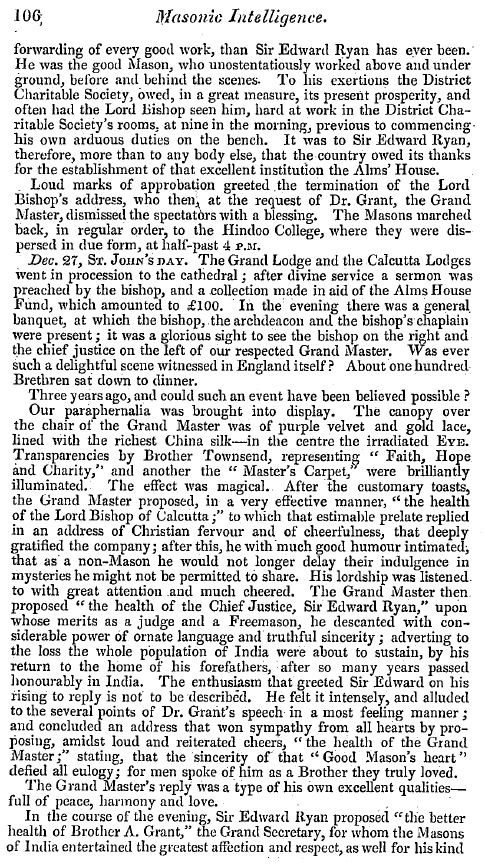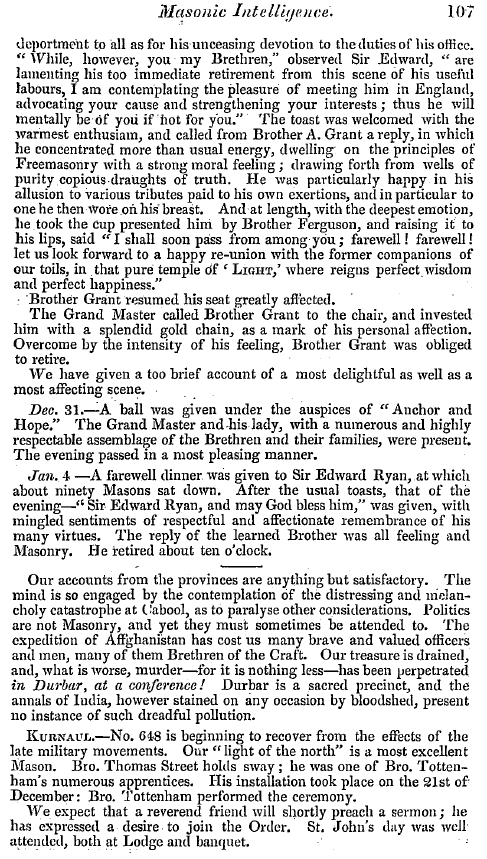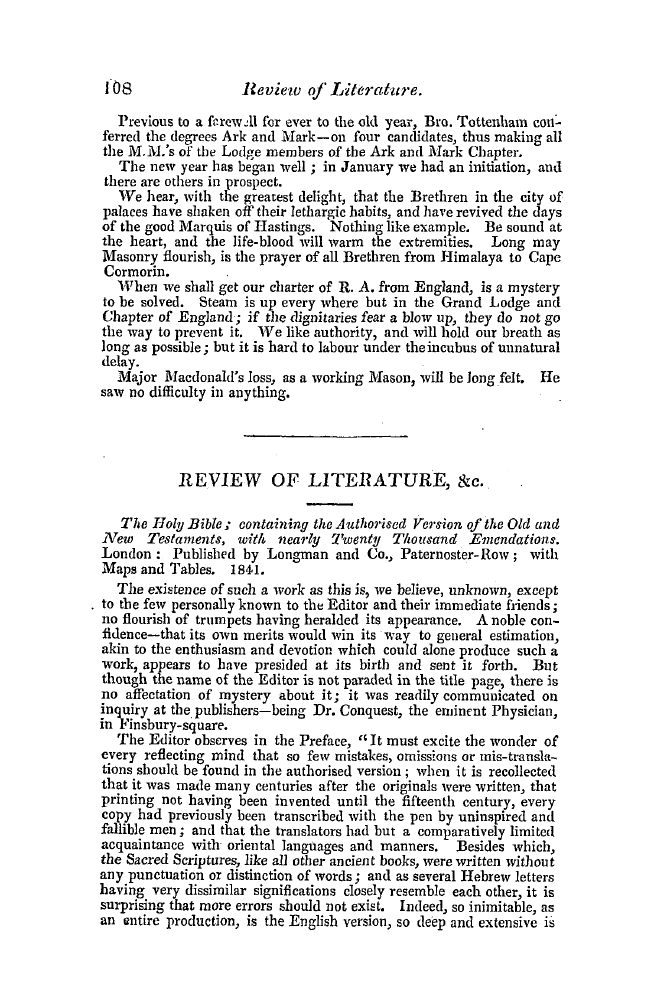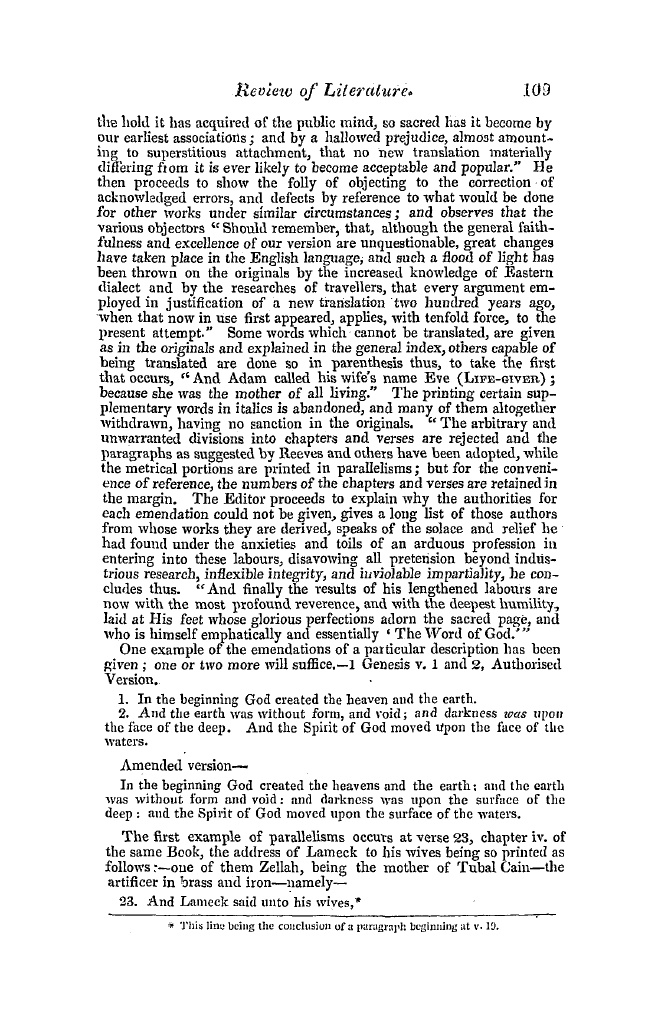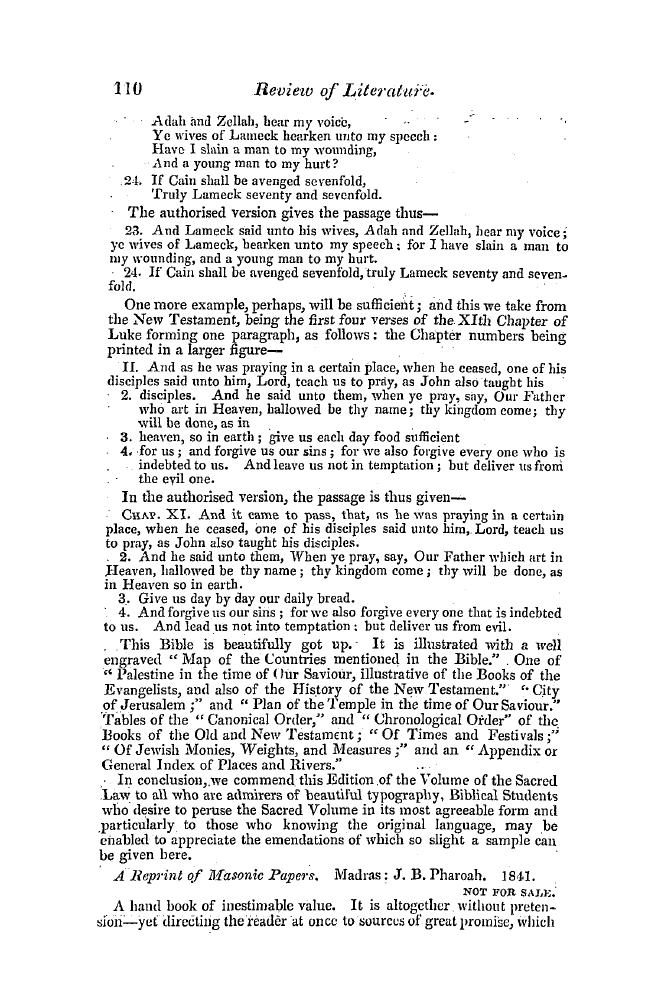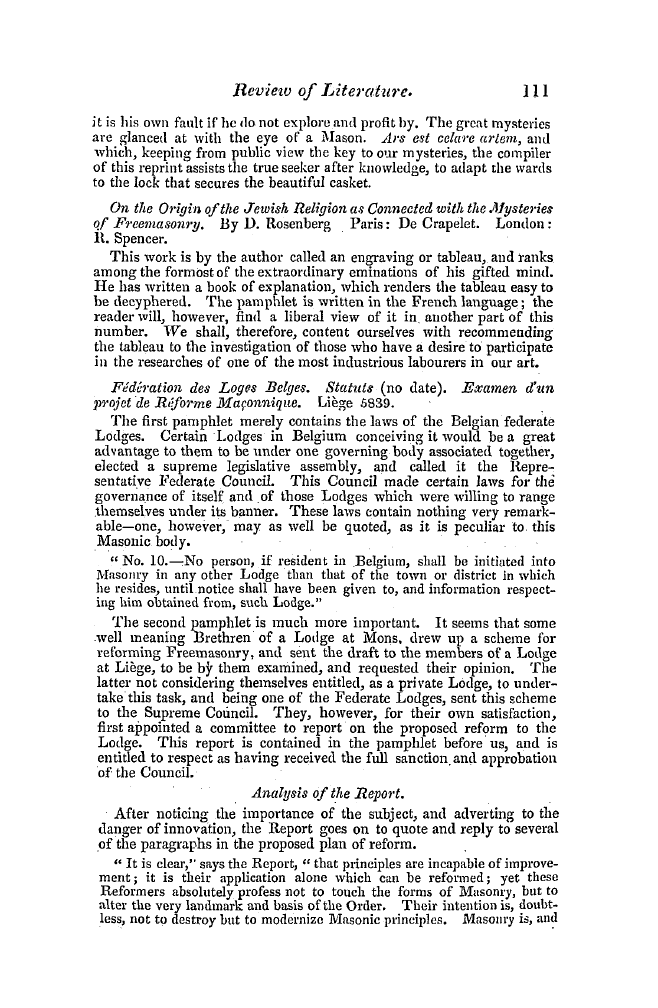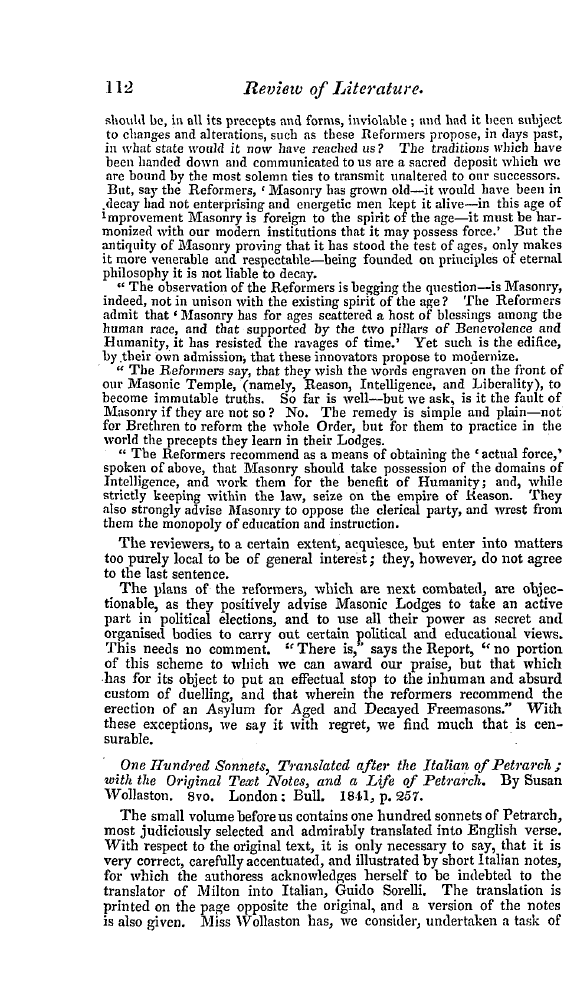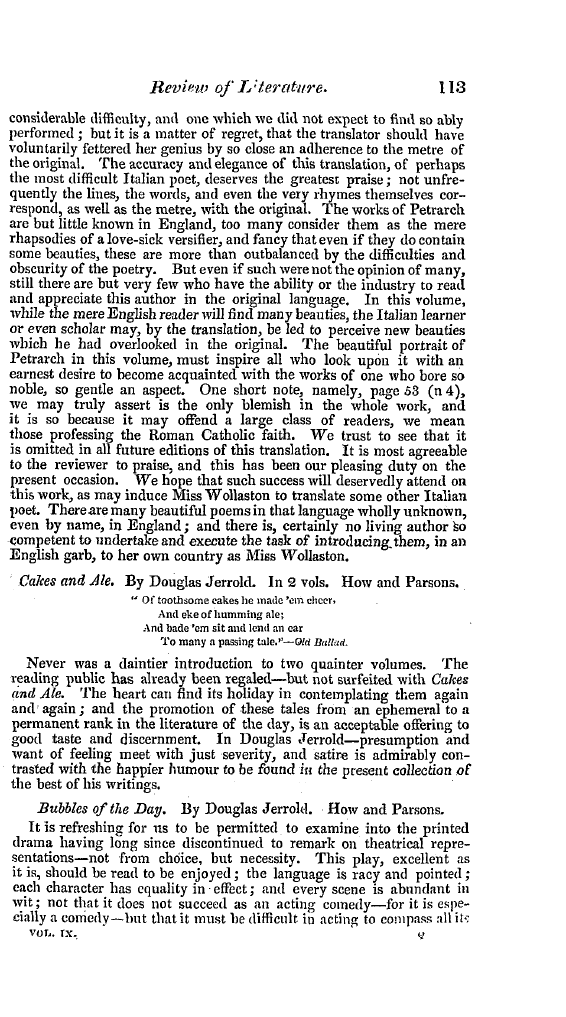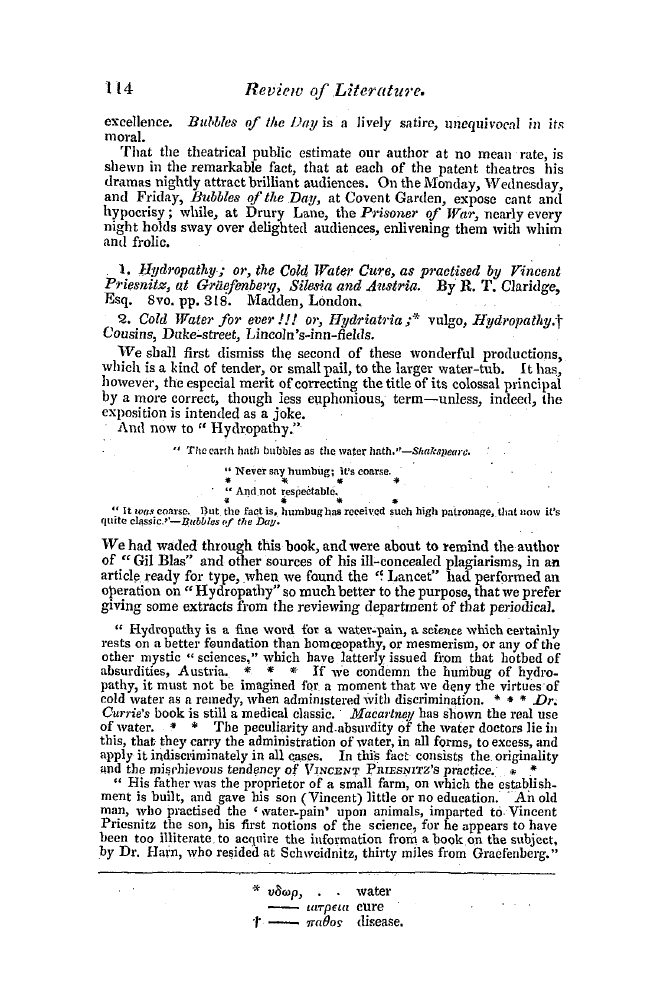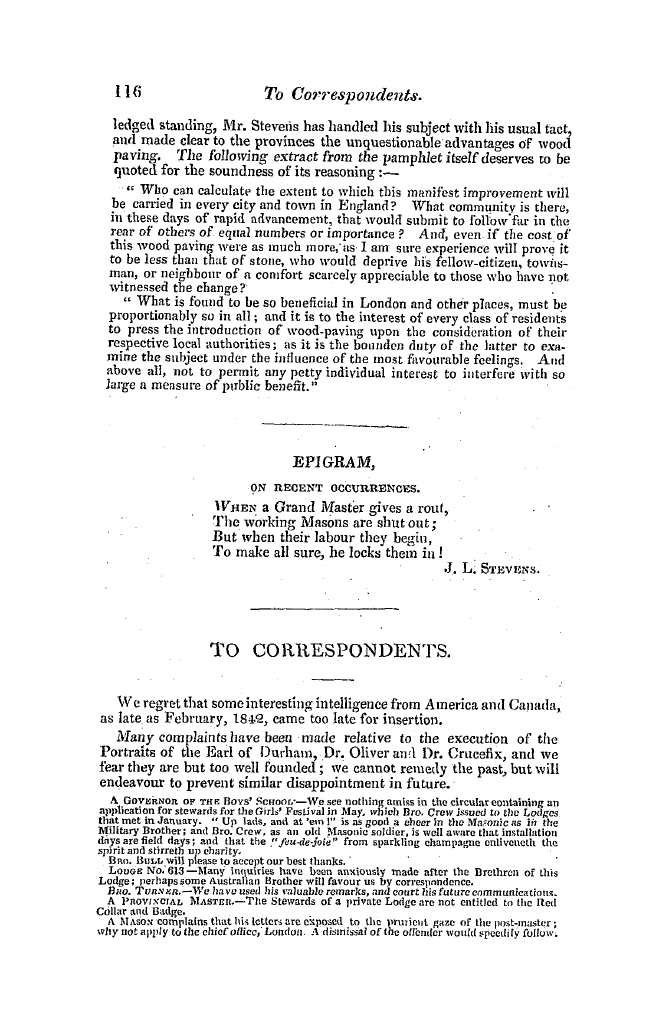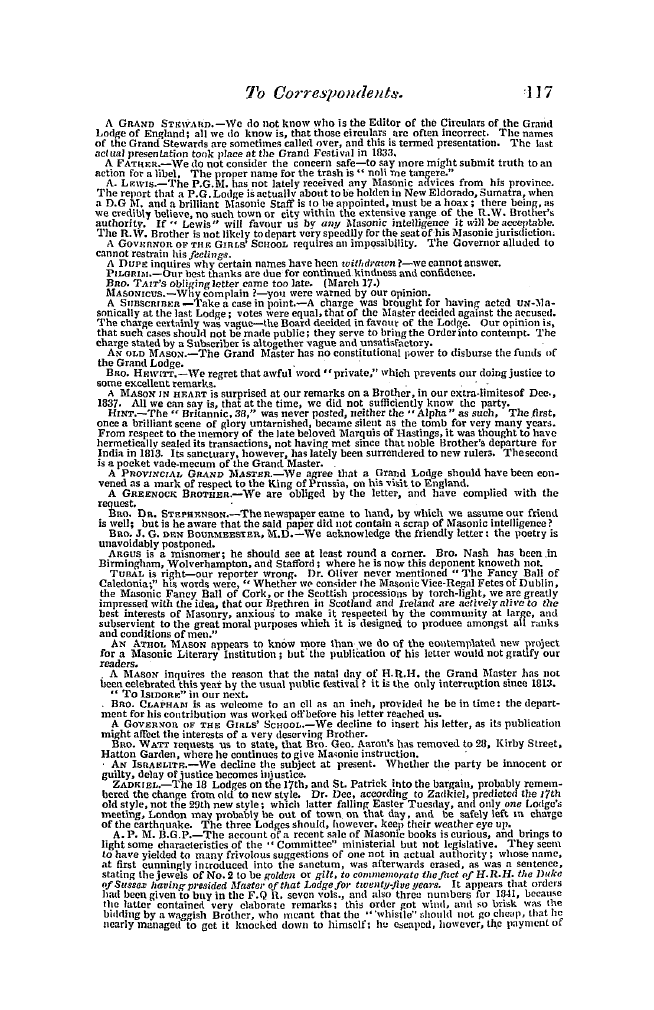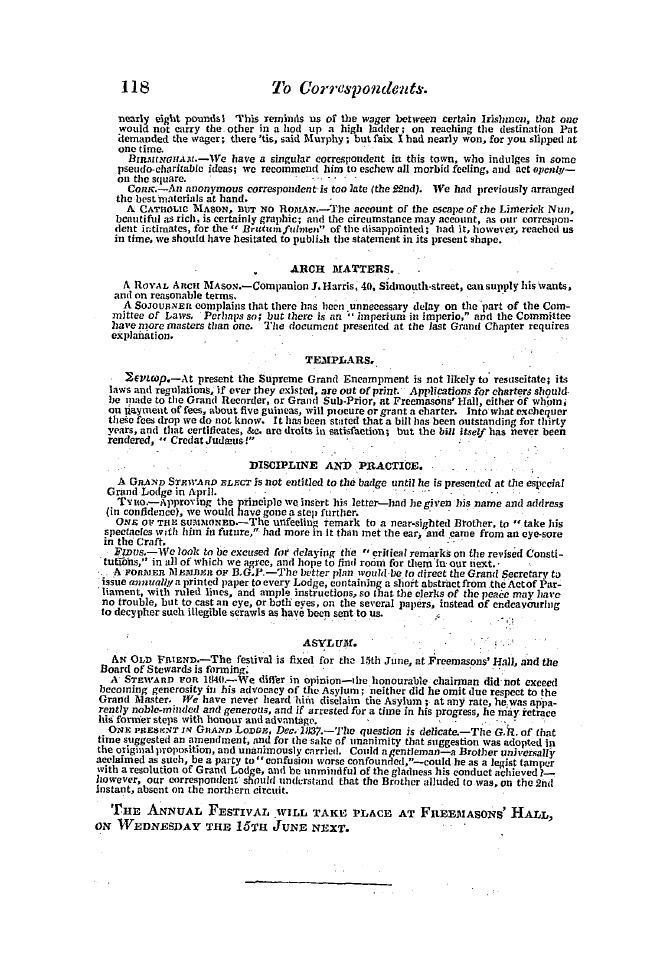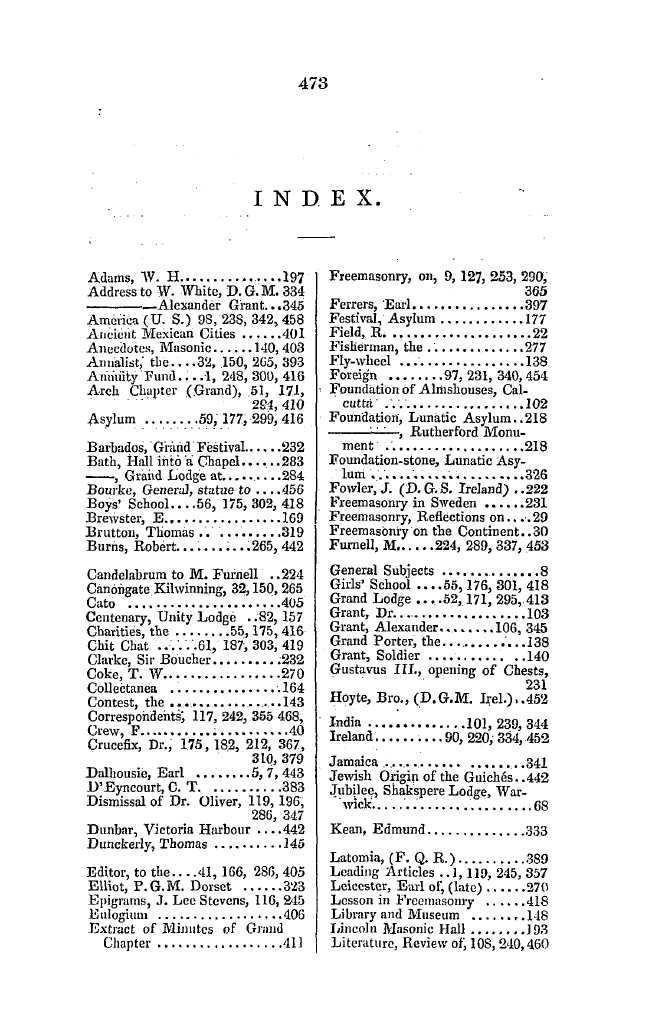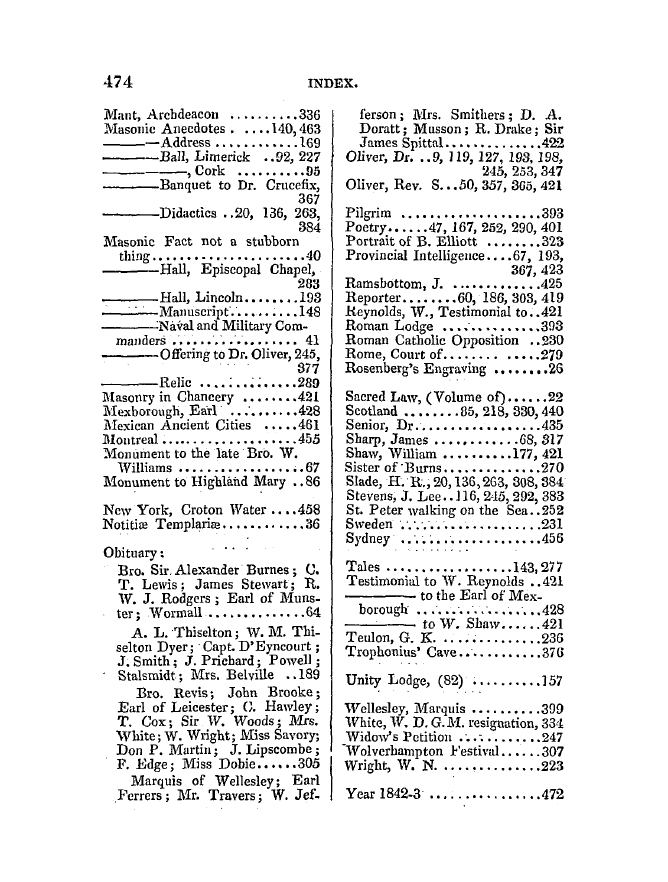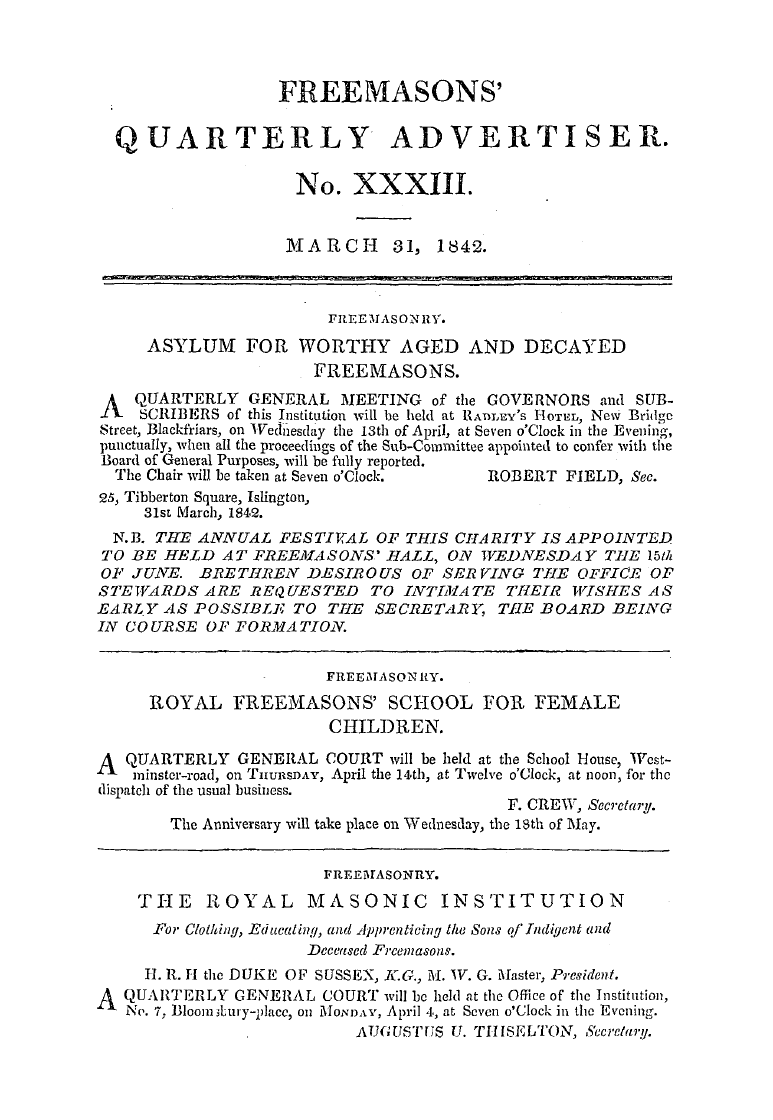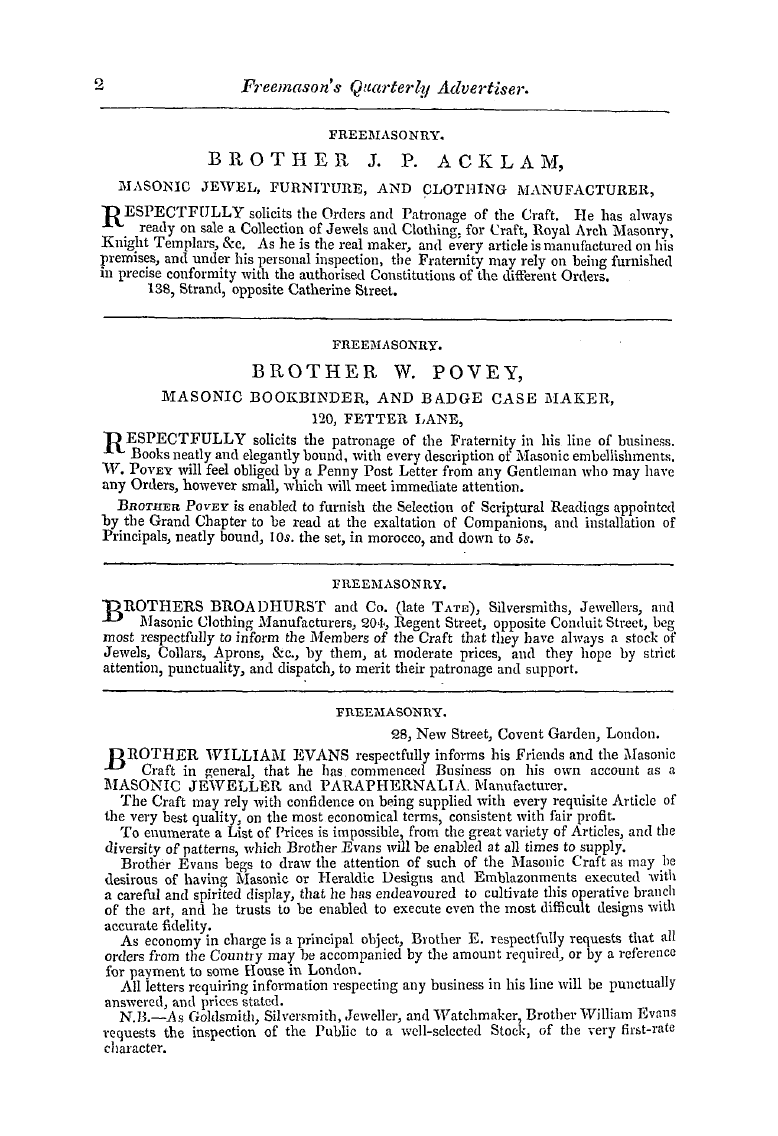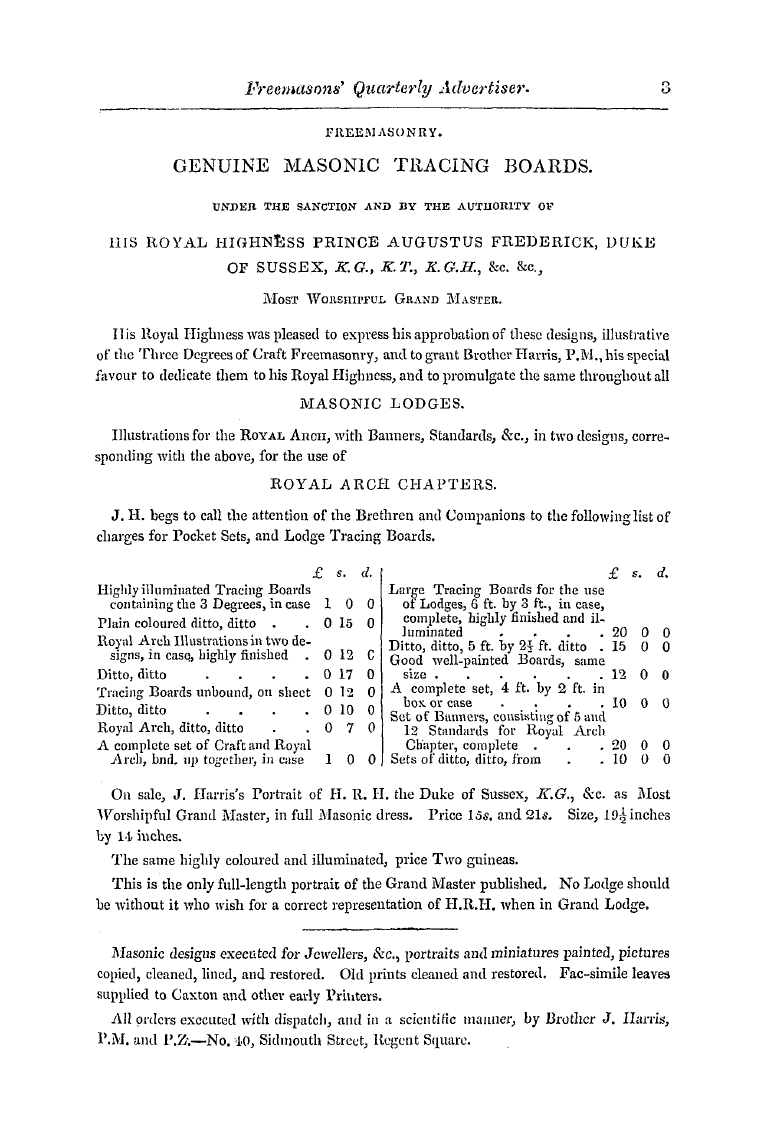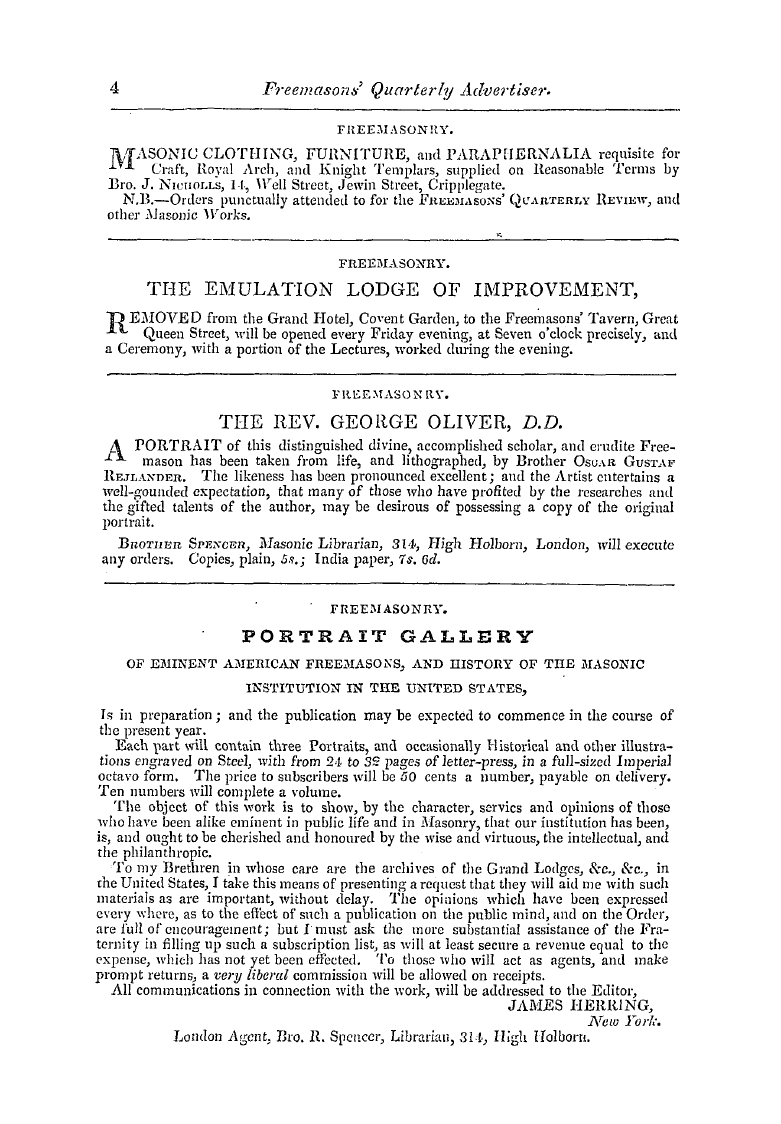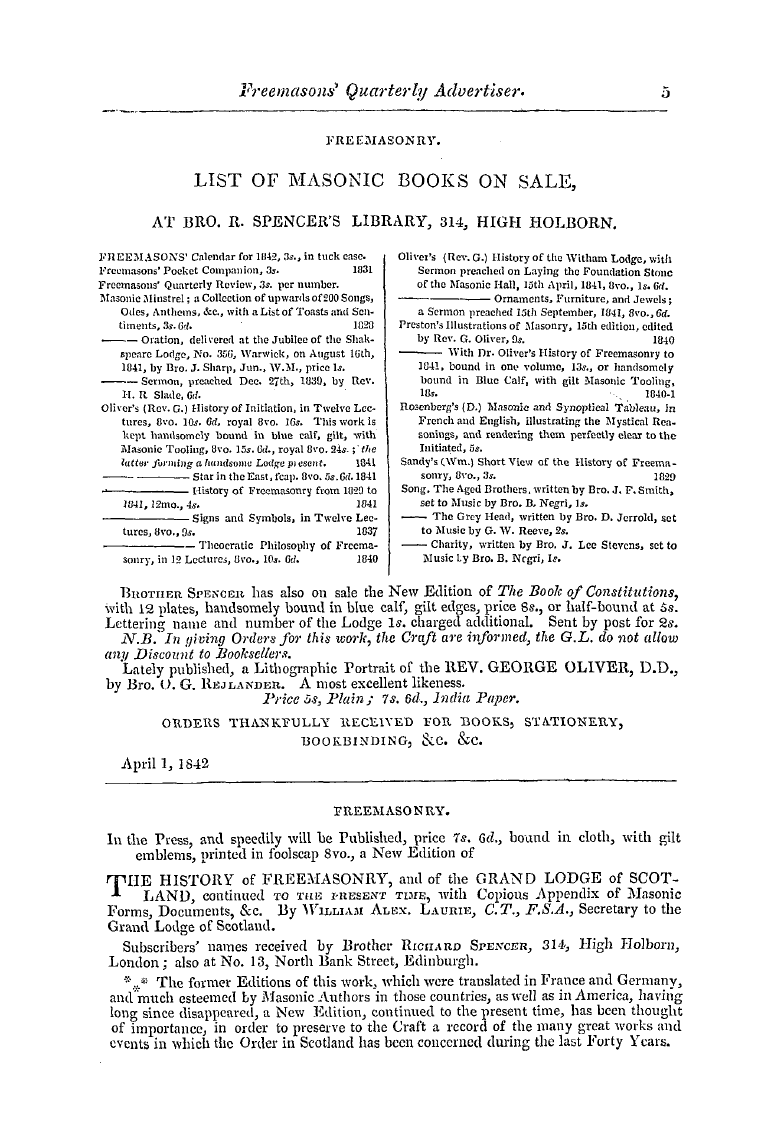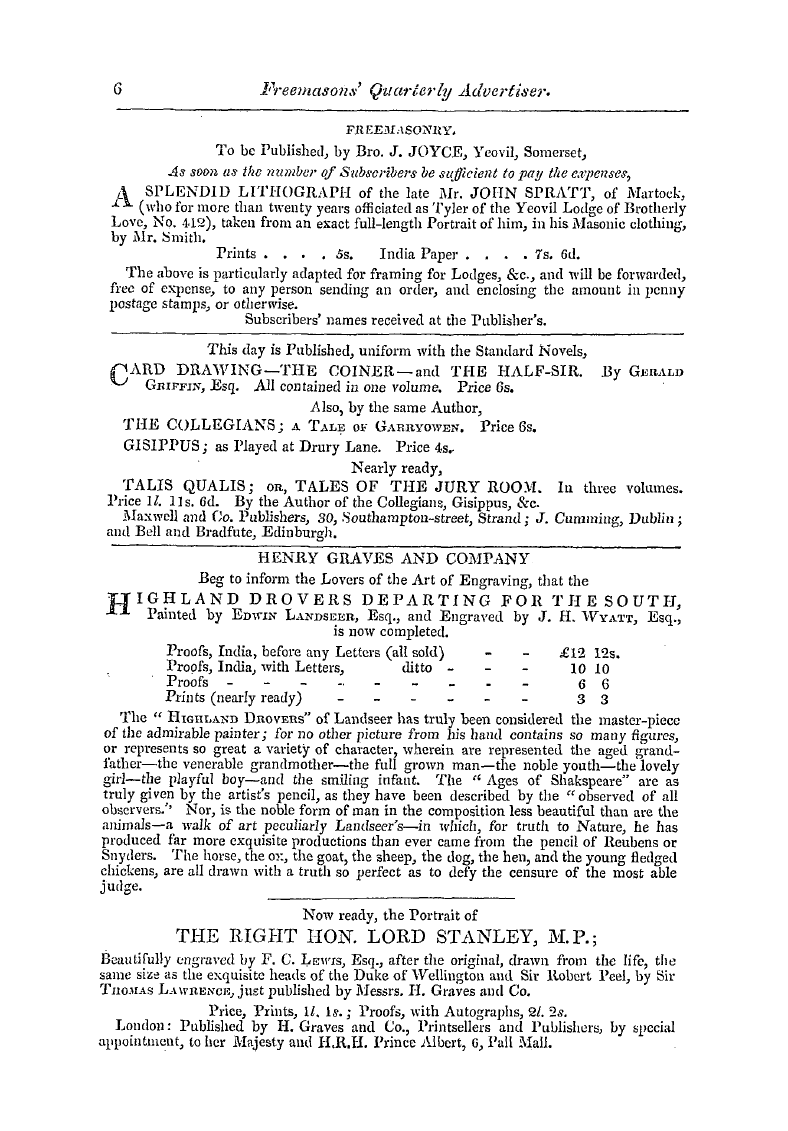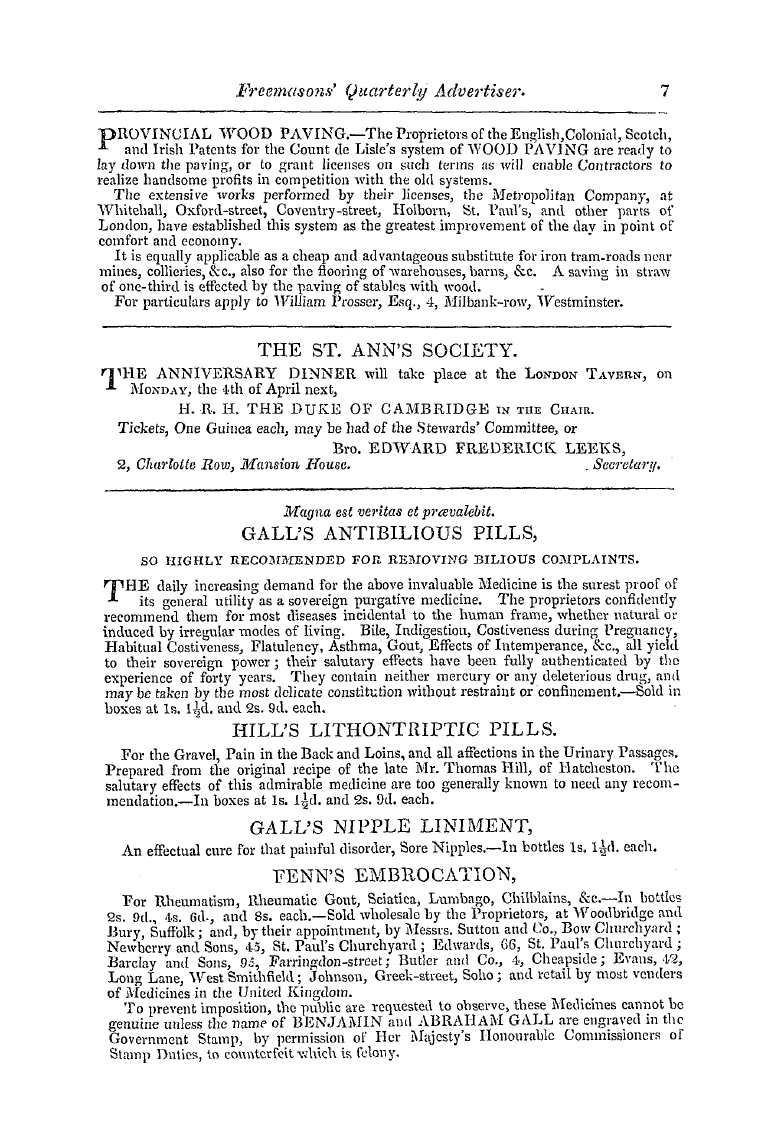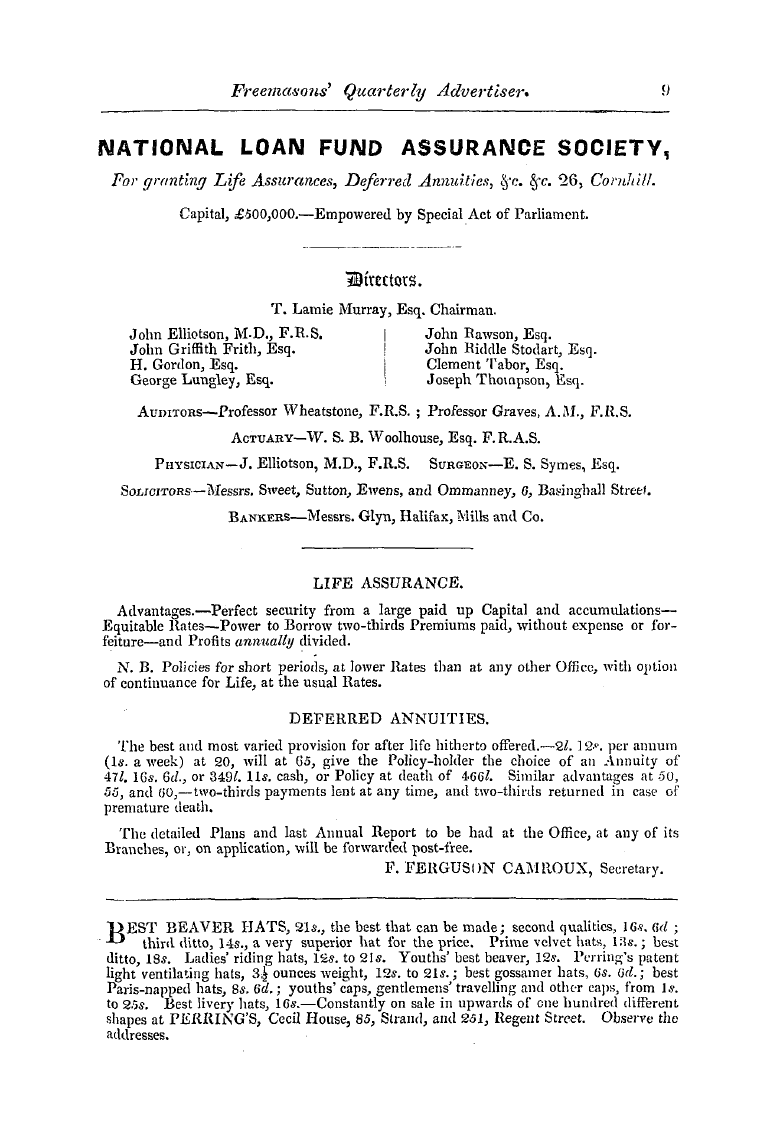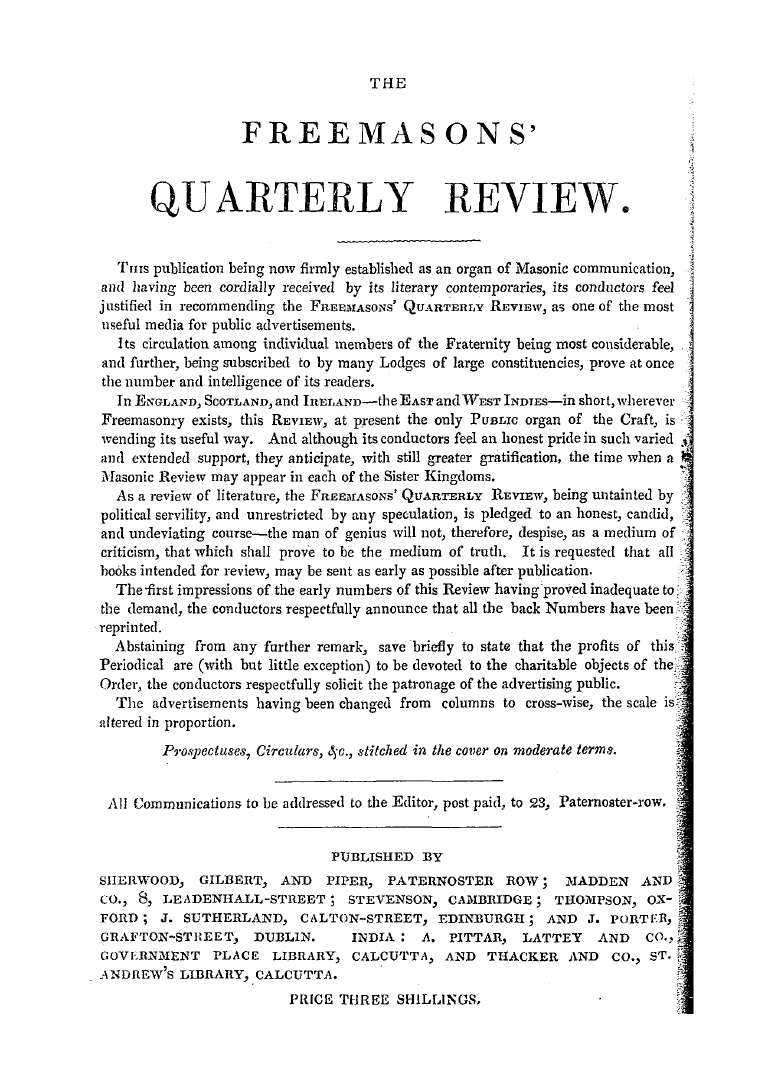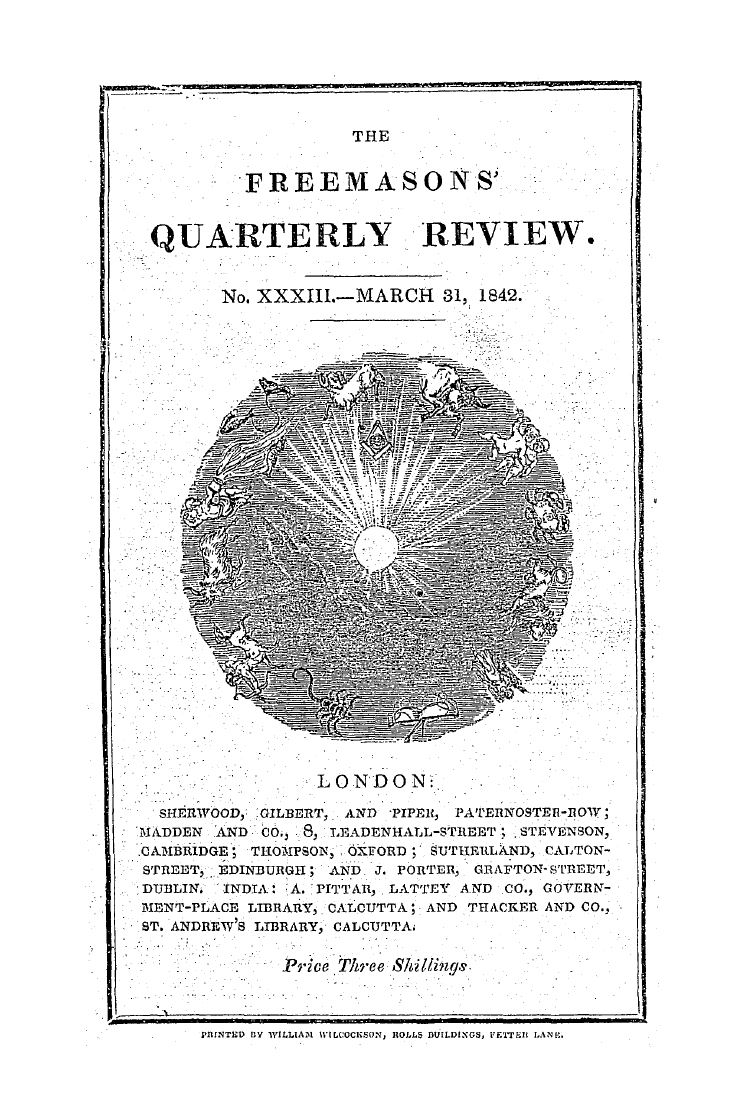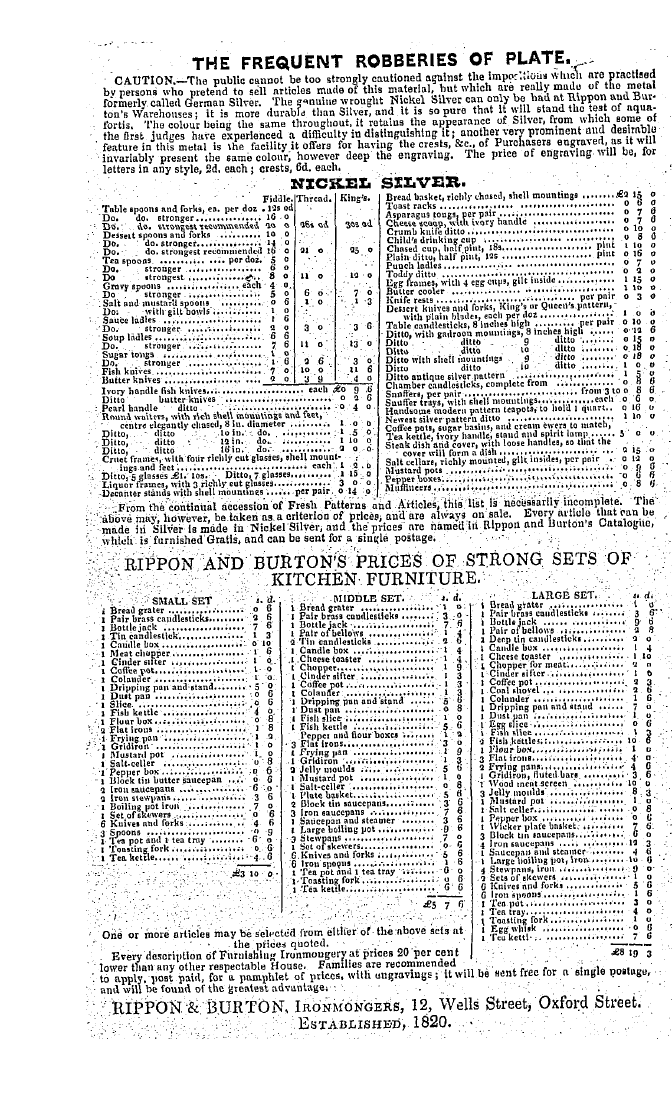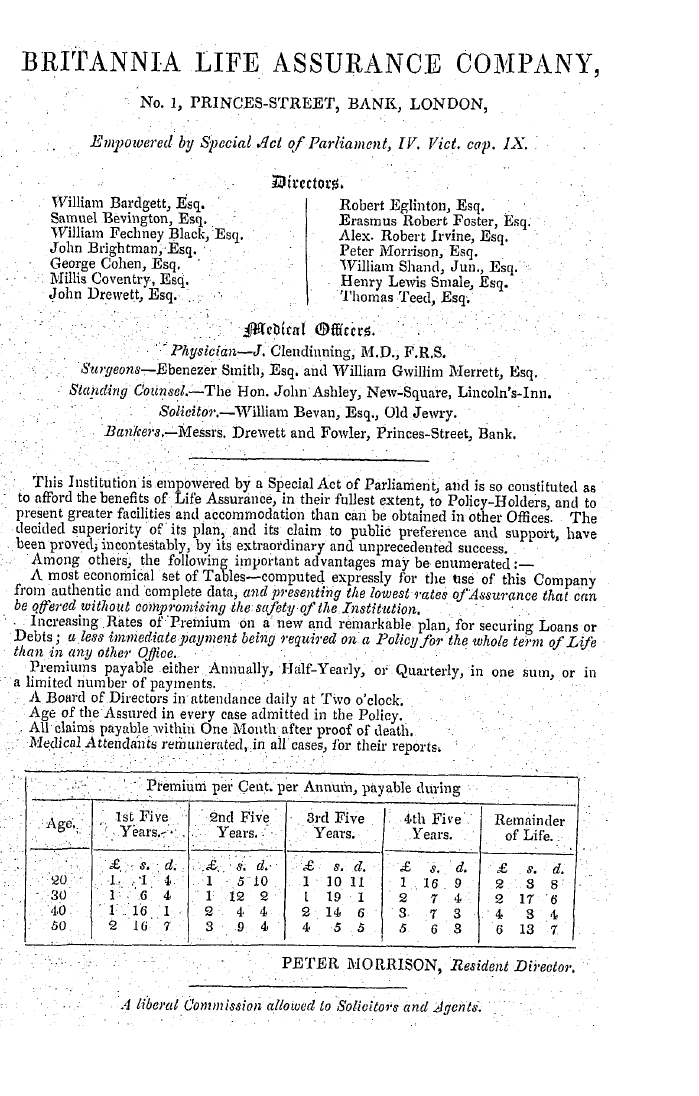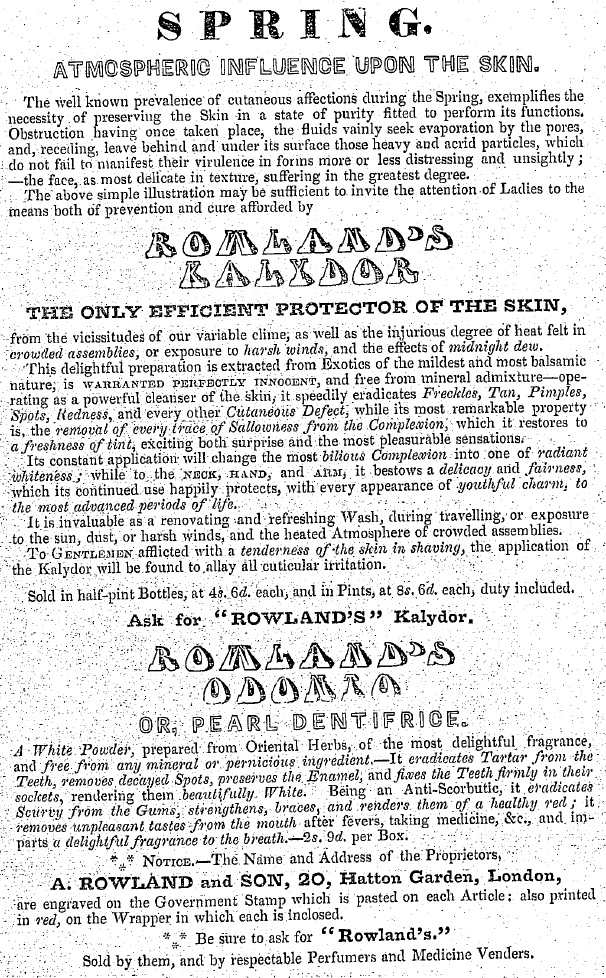-
Articles/Ads
Article THE VOLUME OF THE SACRED LAW. ← Page 3 of 5 →
Note: This text has been automatically extracted via Optical Character Recognition (OCR) software.
The Volume Of The Sacred Law.
declined , ' & c . ( You will remember I translated , ' For man is born to trouble , and the sparks fly upwards . ' ) This explanation will remove the objection , in Job , vii . 1 st verse . Had the translators given a literal version of the orginal , this objection would not have occurred to you . ' Is there not . '—Is there , you know is not in Hebrew—but the negative used is a compound particle , consisting of a negative and an interrogative (*) haloanswering to the Latin annon and the greek ovxi—Now let us
, translate it literally . ( Is there ) not a warfare for man upon earthand as the clays of a hireling his days ? If you fill the ellipsis the passage will run thus —( Is there ) not a warfare for man upon earth , and ( are not ) his days as the days of an hireling ? The translators did not render the (*) van , and , but made two sentences . Dr . Mason Good , says , that from not understanding the doctrines of this particle (*) vav , commentators have so twisted the sense of Jobi . 5 f 'it be
, , may that my sons have sinned and cursed God in their hearts . ' Now the word cursed is , in the orginal , blessed . There are , he says , two opposite propositions , sinning against , and blessing God , which constitute negations to each other , and are united by an imperfect negative particle , whose imperfection is cured or supplied , by the relative negative of the first of the two propositions . The phrase will then run thus— ' It may he that my sons have sinned ( vav , and ) blessed God in their hearts . '"
Now it appears to me , that the rule referred to , by this friend , is precisely that upon which the emendation is founded , but that he has applied it to the last clause of the sentence , instead of to the whole , as has been done by the editor of the beautiful ( in every sense of the word , if
correct , as well asbeautiful ) edition of "The Volume of the Sacred Law , " referred to ; the 6 th and 7 th verses forming the parallelism , and the 7 th requiring the negation to be supplied to convey the sense of the orginal . Every person , at all acquainted with biblical history , knows the extreme care that was bestowed upon the English Authorised Version . But to shew the general reader what good grounds there are for confidence in its correctness , and doubt as to any imputed mistranslation , a brief sketch of its history may not be uninteresting or out of lace here . On
p the request of Dr . Reynolds to King James I ., a conference was held at Hampton Court in 1603 , when it was resolved that what was called the Bishop ' s Bible , printed in 1568 , should be thoroughly revised and compared not only with the most approved copies of the original , but with every other translation which might serve to throw li ght upon the meaning of the original . Of the fifty-four learned men appointed to the accomplishment of this important work , it would appear , from
Fuller ' s Church History , that seven either died or declined the task , as he only gives the names of forty-seven . These were all distinguished for their piety , as well as for the knowledge of the original languages , and were divided into six companies , as follows : The first , consisting of ten , assembled at Westminster , and undertook to translate from the Pentateuch to the Second Book of Kings . The second , consisting of eight , met at Cambridge , and were to finish
the Historical Books and the Hagiographa . The third , consisting of seven , met at Oxford , and undertook the four greater Prophets , the Lamentations , and the twelve minor Prophets .
Note: This text has been automatically extracted via Optical Character Recognition (OCR) software.
The Volume Of The Sacred Law.
declined , ' & c . ( You will remember I translated , ' For man is born to trouble , and the sparks fly upwards . ' ) This explanation will remove the objection , in Job , vii . 1 st verse . Had the translators given a literal version of the orginal , this objection would not have occurred to you . ' Is there not . '—Is there , you know is not in Hebrew—but the negative used is a compound particle , consisting of a negative and an interrogative (*) haloanswering to the Latin annon and the greek ovxi—Now let us
, translate it literally . ( Is there ) not a warfare for man upon earthand as the clays of a hireling his days ? If you fill the ellipsis the passage will run thus —( Is there ) not a warfare for man upon earth , and ( are not ) his days as the days of an hireling ? The translators did not render the (*) van , and , but made two sentences . Dr . Mason Good , says , that from not understanding the doctrines of this particle (*) vav , commentators have so twisted the sense of Jobi . 5 f 'it be
, , may that my sons have sinned and cursed God in their hearts . ' Now the word cursed is , in the orginal , blessed . There are , he says , two opposite propositions , sinning against , and blessing God , which constitute negations to each other , and are united by an imperfect negative particle , whose imperfection is cured or supplied , by the relative negative of the first of the two propositions . The phrase will then run thus— ' It may he that my sons have sinned ( vav , and ) blessed God in their hearts . '"
Now it appears to me , that the rule referred to , by this friend , is precisely that upon which the emendation is founded , but that he has applied it to the last clause of the sentence , instead of to the whole , as has been done by the editor of the beautiful ( in every sense of the word , if
correct , as well asbeautiful ) edition of "The Volume of the Sacred Law , " referred to ; the 6 th and 7 th verses forming the parallelism , and the 7 th requiring the negation to be supplied to convey the sense of the orginal . Every person , at all acquainted with biblical history , knows the extreme care that was bestowed upon the English Authorised Version . But to shew the general reader what good grounds there are for confidence in its correctness , and doubt as to any imputed mistranslation , a brief sketch of its history may not be uninteresting or out of lace here . On
p the request of Dr . Reynolds to King James I ., a conference was held at Hampton Court in 1603 , when it was resolved that what was called the Bishop ' s Bible , printed in 1568 , should be thoroughly revised and compared not only with the most approved copies of the original , but with every other translation which might serve to throw li ght upon the meaning of the original . Of the fifty-four learned men appointed to the accomplishment of this important work , it would appear , from
Fuller ' s Church History , that seven either died or declined the task , as he only gives the names of forty-seven . These were all distinguished for their piety , as well as for the knowledge of the original languages , and were divided into six companies , as follows : The first , consisting of ten , assembled at Westminster , and undertook to translate from the Pentateuch to the Second Book of Kings . The second , consisting of eight , met at Cambridge , and were to finish
the Historical Books and the Hagiographa . The third , consisting of seven , met at Oxford , and undertook the four greater Prophets , the Lamentations , and the twelve minor Prophets .
